The Old West was a time of adventure and excitement. It was an era of expansion as migrants traveled across the country to start a new life in unknown land. Though the idea of settling out in the great unknown can be thrilling, it can also come with its set of dangers and challenges, which many settlers discovered the hard way. Although life was extremely difficult during the 19th century, there was still moments of success. Events such as the California gold rush helped usher in wealth and opportunity to settlers. Towns were being built, saloons became popularized, and dance halls were taking its roots. Of course, though Hollywood likes to romanticize the Old West, it can not be denied that there was definitely a dark side that loomed over the wild frontier. With free land for the taking, everyone was in competition with one another as they fought for the riches that they were promised if they were to set out into different territory.
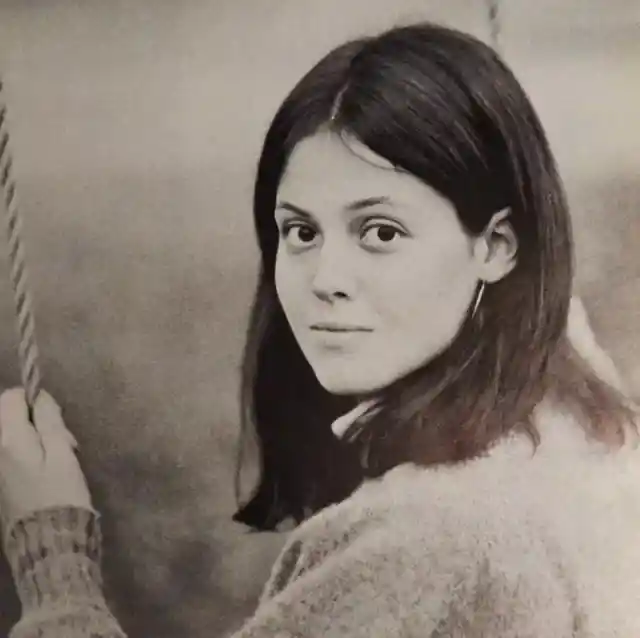
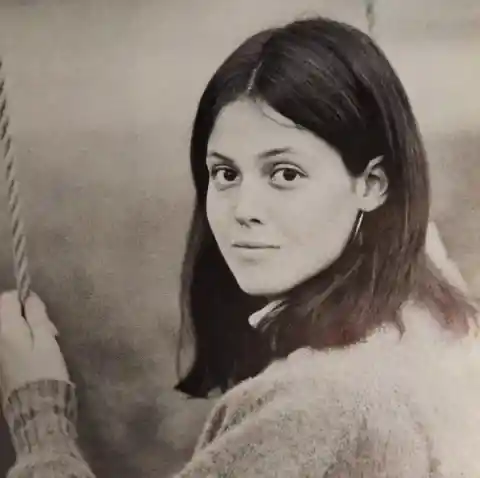
This not only caused tension with each other, but also with the Natives, who were forced out of their land in order to accommodate the foreigners who invaded their homes. Violence erupted, wars began, and, as a result, many lives perished. Poverty was everywhere, disease ran rampant, and Nature wreaked havoc over the land that was promised to be filled with nothing but bounty. In order to make it in such dangerous conditions, many had to resort to drastic means of survival. Robbery was common, crime was constant, and outlaws were created. Bandits became legends and some were even considered heroes. All these reasons and more is what helped change the new frontier into what is now known as the Wild West.
Though the Wild West is now greatly admired and celebrated as an ideal of the American lifestyle, it is also a period in history where chaos reigned and injustice was an everyday occurrence. Take a look at how the great West, which is often boasted, is actually an era with a horrible dark side.
In 1851, when she was only fourteen years old, Olive Oatman’s parents were killed by a tribe of Native Indians in present-day Arizona. Her and her sister were spared, but were enslaved and later sold them to the Mohave tribe. Oatman spent several years with the Mohave tribe, during which her sister died of starvation.
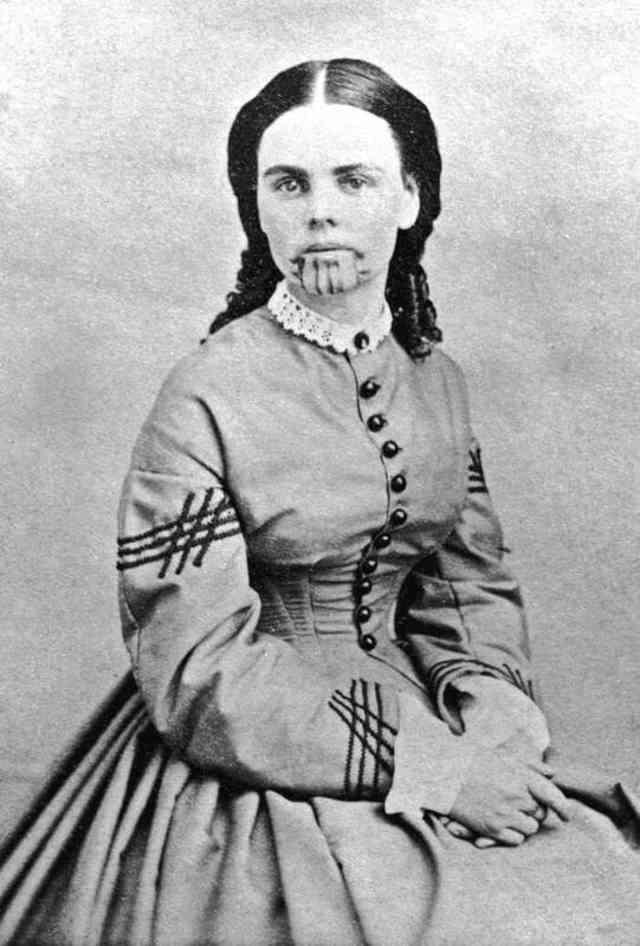
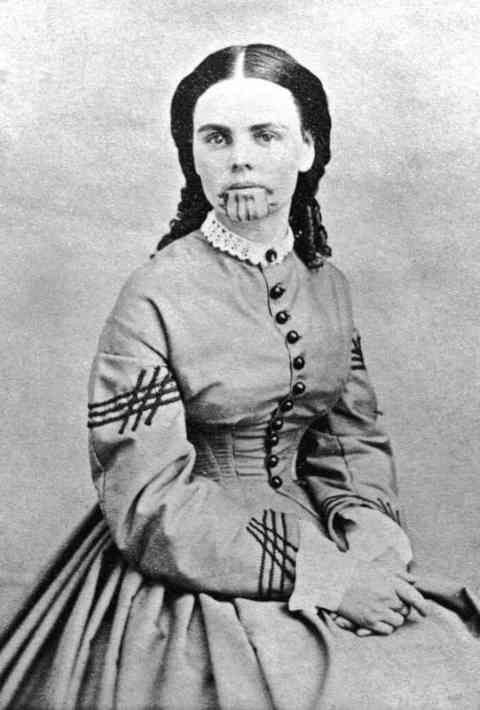
Finally, after five years of being carried off, Oatman returned to white society, but not without scars from her experience. The tale of Oatman was told for years to come, with the story resonating with the media of that time, especially considering the fact that she was now branded by the Mohave tribe by the blue tattooing on her chin. Though her story was publicized to warn Americans of the savagery of the Indians, much of what actually happened during Oatman’s time in their custody remains widely unknown.
In the 19th century, Bison were hunted so much that they were almost to the point of extinction. They were solely hunted for their skins, but their meat was also of value as well. One of the major causes of the Bison’s decline in numbers was due to habitat loss, which was the direct result of the expansion in North America during that time. Also, the animal was hunted by both the Native Americans and the newcomers, meaning that Bison was in high demand.
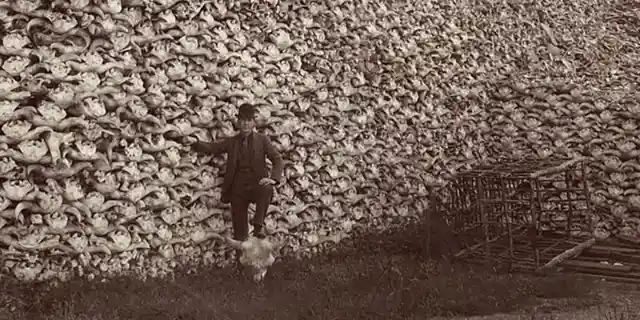
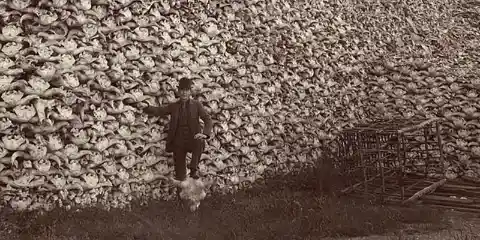
This photo taken in 1882, showing just a small portion of Bison skulls that were gathered. The remaining bones were left to decay on the ground. What people in that time didn’t know is that with the decline of Bison, it also meant the decline of a major food source, especially for the indigenous people, putting them in a very difficult position to say the least.
Captured by Frank G. Carpenter in the 1890s, this Eskimo Medicine Man was told to be exorcising “evil spirits” from a sick boy in Alaska. To the indigenous people of the Americas, medicine men and women were considered both healers and spiritual leaders to their community. In some particular cultures, they are also ceremonial leaders.
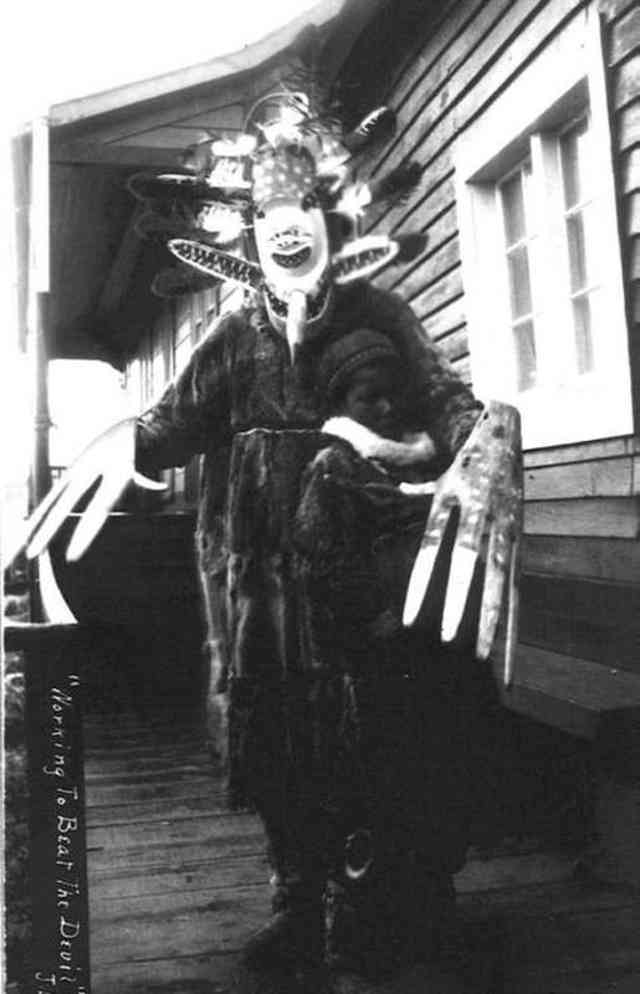
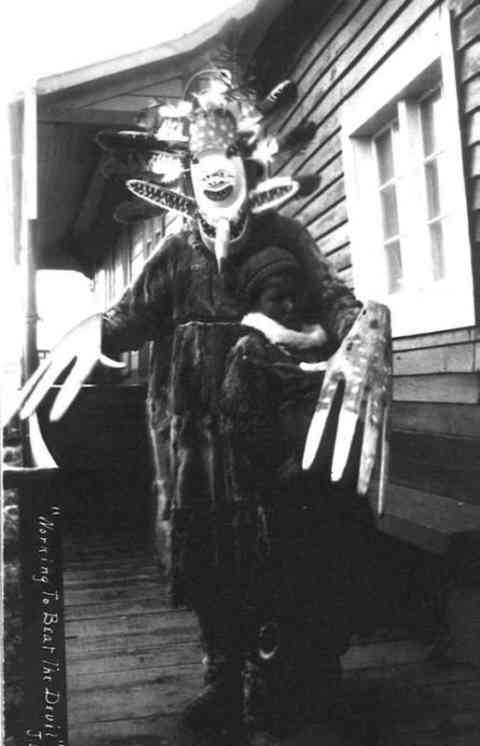
Native Americas, both in the past and today, tend to be reluctant when discussing medicine men to non-Indians. This is because, medicine men in Western culture are often thought of as workers of magic and have even given them the offensive title of “witch doctors”. Judging from this picture, we can understand why some non-Indians would be fearful of the medicine man.
Born in 1840, William T. Anderson, infamously known as Bloody Bill, became the leader of the gang, Quantrill’s Raiders. His reign of murder and robbery gave him the title as one of the deadliest and notorious pro-Confederate guerilla leaders in the American Civil War.
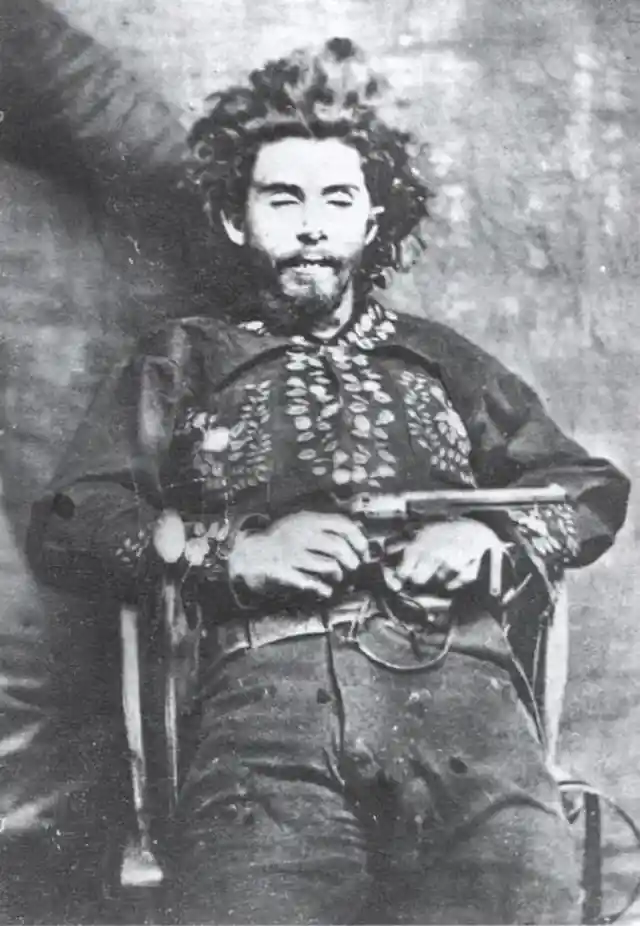
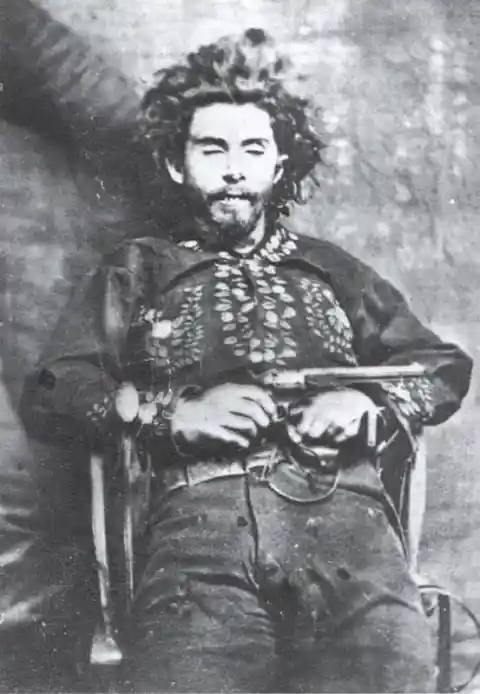
The hate that he had for Union soldiers most likely stemmed from the fact that his father was killed by a Union solider, causing him to flee from his home state of Kansas and forcing him to live off the land, basically meaning he had to steal and kill a lot of people in order to get what he wanted. On one occasion, he killed 20 soldiers with his gang and then massacred another 100. Though there is no denying that he was a ruthless killer, and cause havoc back in the day, many historians today cannot help but blame the lawlessness and desperation that was the wild west for his actions.
One of the earliest forms of photography was called ambrotype and was introduce in the early 1850s. This new practice of photography quickly gained popularity because it maintained clarity of the image. In addition, it was cheaper and faster to produce, making it easier for more people to have to their picture taken.
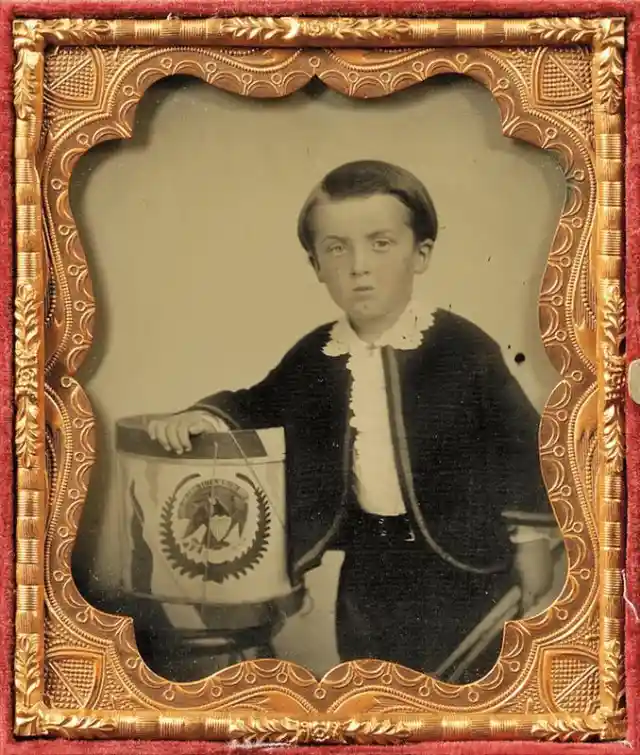
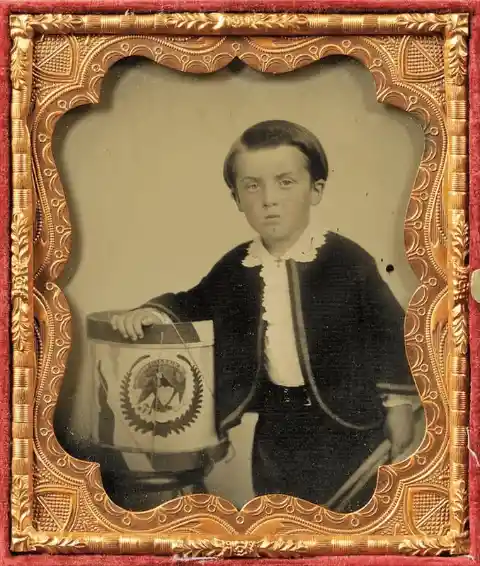
The process was done on glass, and was typically used for portraits, just like the picture above. However, there have been instances where this was not always the case. Ambrotype was used for about 10 years before tintype took over and became the new method of photography.
This old west saloon in Monroe County, Michigan looks just like one of today’s many bars. This is because the general layout of saloons and bars has not changed much in the 150 years since. One thing that has changed is the main merchandise – beer.
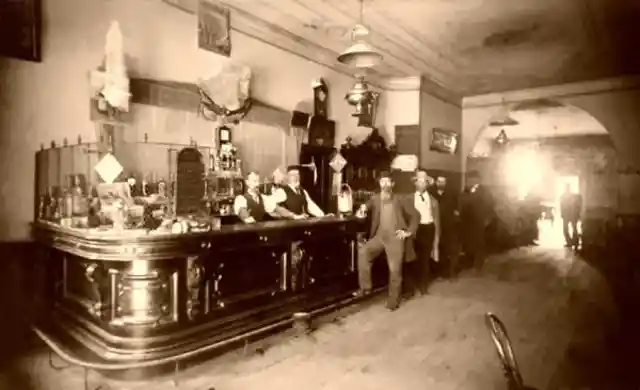
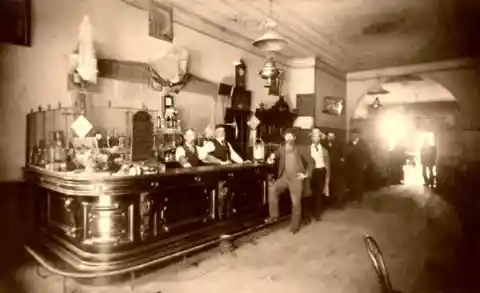
Back in the day, beer was not ice cold with a sudsy head at the top. With no refrigeration and pasteurization yet invented, many people in the wild west were stuck with 55-65-degree beer that had to be knocked down fast before it went flat. It certainly must have been a depressing time when not even beer could be pleasurable.
One of the most famous female outlaws in the wild west was Belle Starr. Her real name was Myra Maybelle Shirley Reed Starr and her family called her May. She was associated with the James-Younger Gang as well as other outlaws. In 1889, she was shot and killed in a case that to this day is still unsolved.
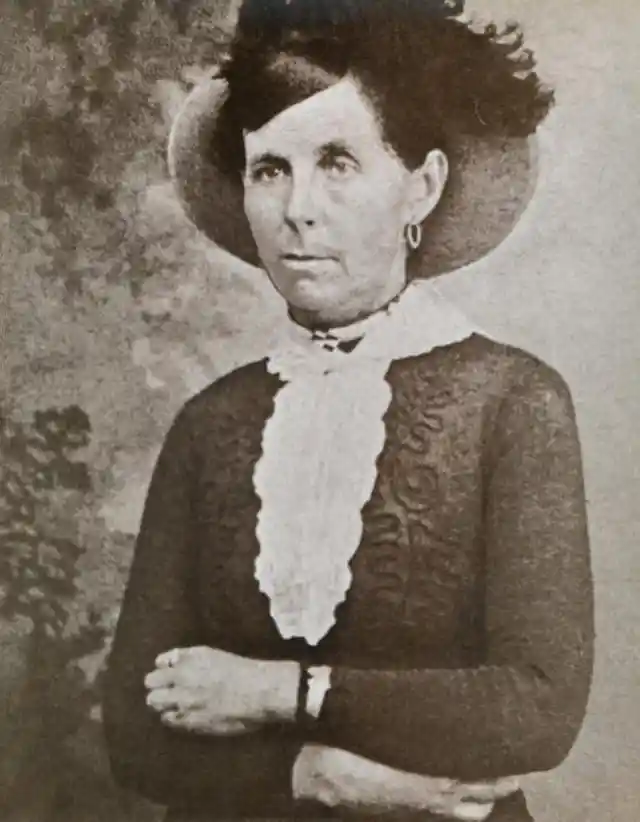
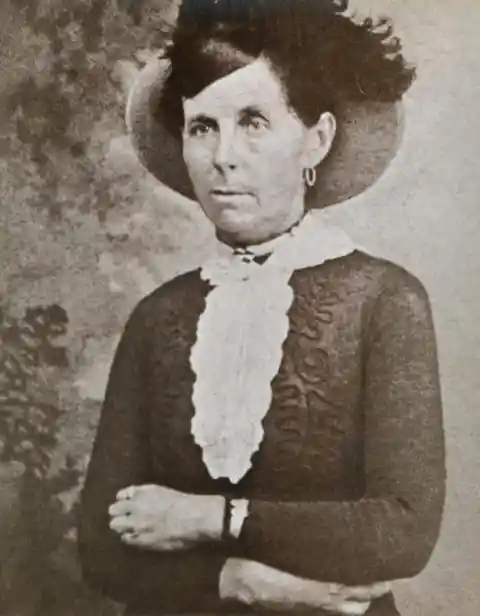
Since her murder, there have been many versions about the story of her death. They range from her son, which she brutally beat, shooting her to her husband shooting her. Regardless, Edgar Watson, a man who she refused to dance with at a party, was convicted of her murder in trial and was later executed for it.
James Butler Hickock, also known as “Wild Bill” Hickock was a folk hero of the American Old West and may have been the fastest gun in the west. Legend has it that he killed over 100 people. Hickock was not happy when this count gave him the reputation of being a killer. He was responsible for exaggerating his kill count when in reality, he killed only about six or seven men in gunfights.
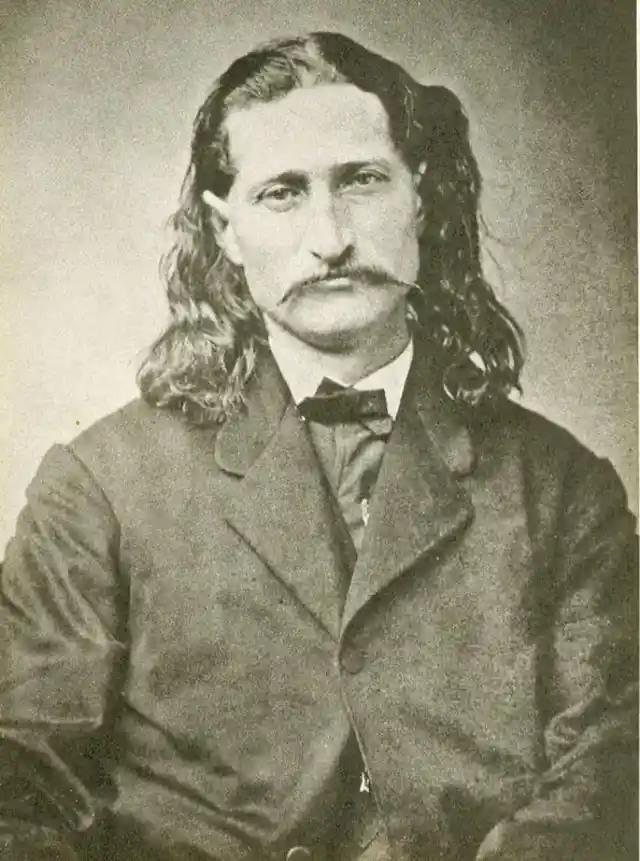
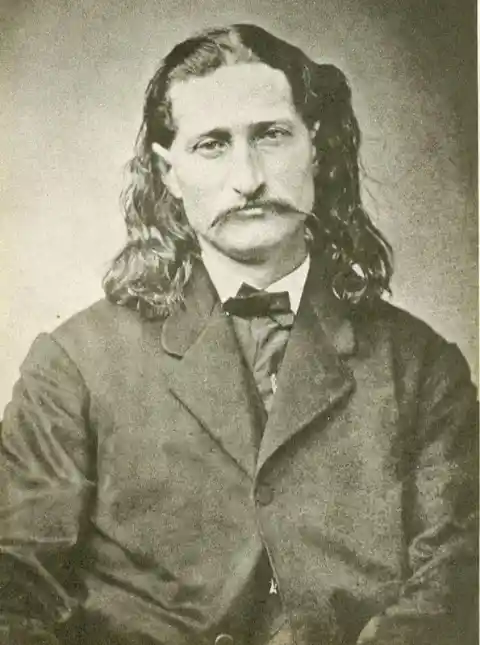
After years of serving in the American Civil War and gained a lot of publicity for being a scout, marksman, actor, and professional gambler. Hickock was eventually killed after being shot in the head during a poker game. Legend has it that the cards he was holding at the time of his death was dead man’s hand: two pairs, aces and eights.
Native Americans had a special name for any Black American who served in the U.S. Army: Buffalo Soldier. You might remember the term from Bob Marley’s song. The Native Americans first gave the Black Calvary this title when they were fighting in the Indian Wars.
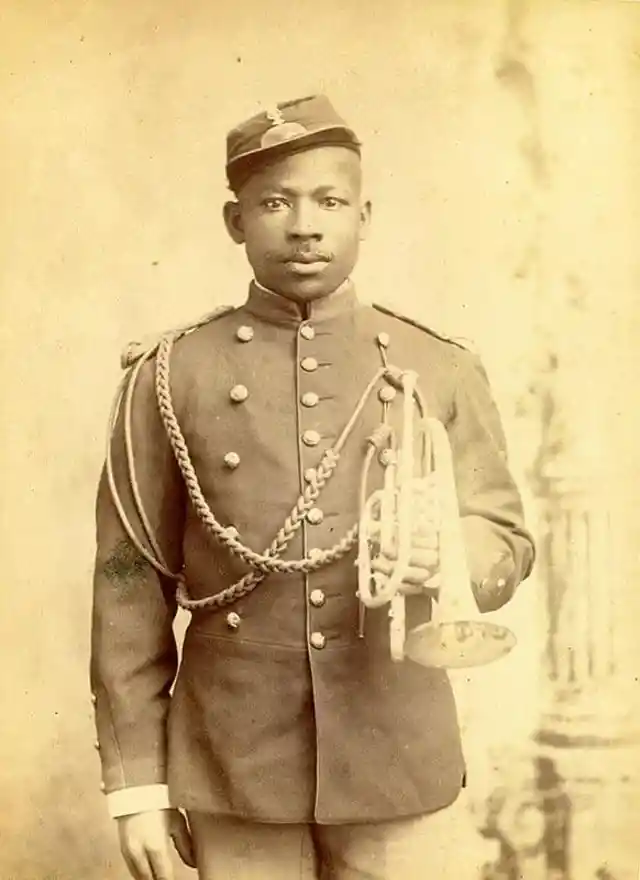
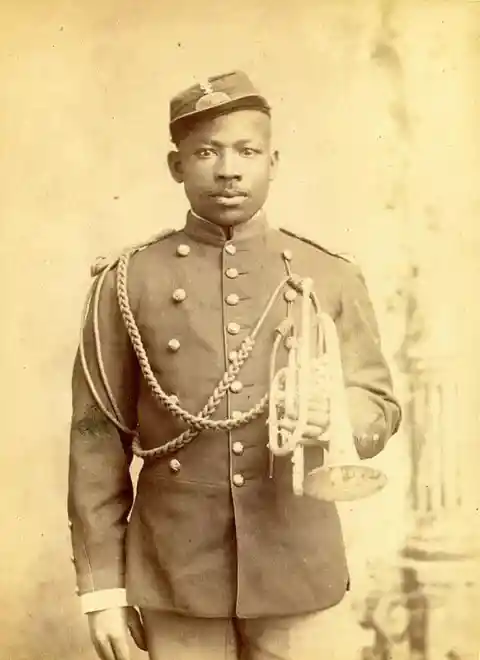
After some time, the term was eventually synonymous with all of the African-American regiments formed in 1866. Overall, 23 Buffalo Soldiers received the Medal of Honor during the Indian Wars. On September 6, 2005, the final living Buffalo Soldier, Mark Matthews, passed away. He was 111 years old and was buried at Arlington National Cemetery.
Wyatt Earp is photographed with his friend Bat Masterson. Wyatt is known for his role in the gunfight at the O.K. Corral where he along with his brothers, Morgan and Virgil, as well as his friend, Doc Holliday, squared off against four outlaws. As for Masterson, he was apart of the Second Battle of Adobe Walls. On June 28, 1874, he joined a small group of twenty-eight buffalo hunters.
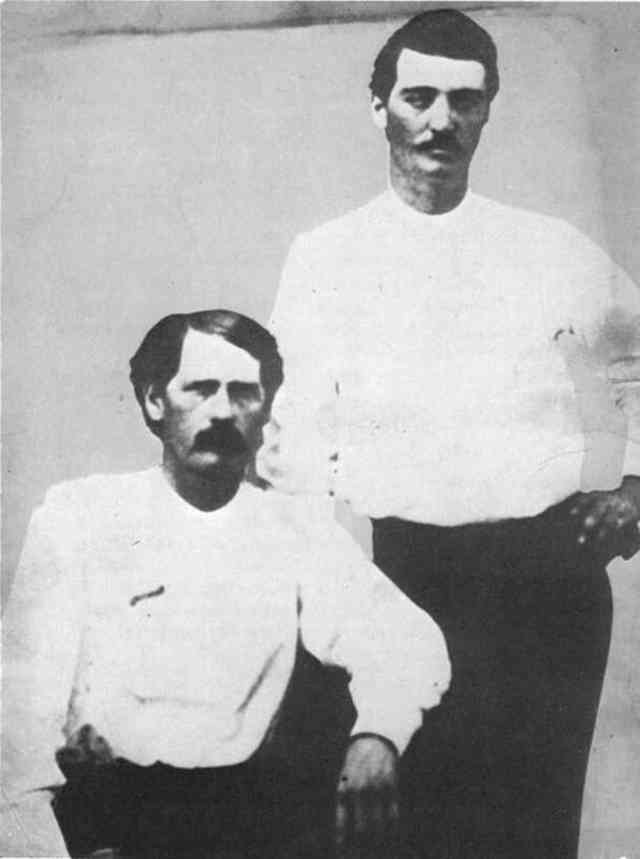
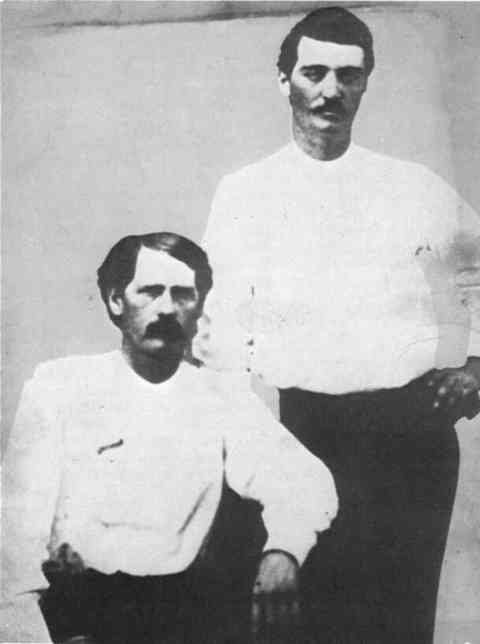
Together, they held off hundreds of Comanche and Kiowa warriors. Though he gained fame for his deeds, Masterson never really considered himself a legend. He reserved that spot for Earp. Eventually, Masterson moved to Dodge City, Kansas where he served as a sheriff’s deputy with Earp.
Among the many Apache Indians ceremonial gowns, they are the Apache spirit dancers. This freaky looking costume and headpiece is their form of storytelling and healing from the “Mountain Spirits”. The photo was taken in 1887, but the Apache mountain spirit dancers live on through tradition.
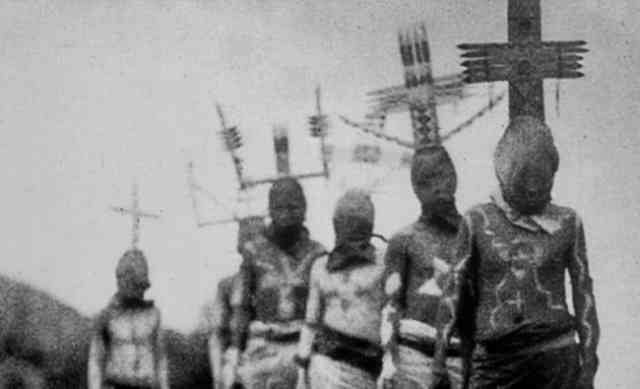
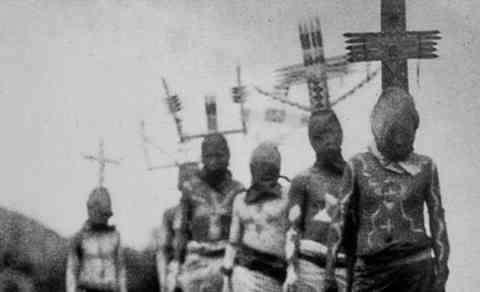
These spiritual dances actually help researchers today to discover what the Apache people back in the day were truly like. Each costume represented a different spiritual character, each headdress held a significance, each move told a story - all this information and more help us today have a little piece of insight into this amazing culture.
Ned Christie, also known as NeDe WaDe in Cherokee, was a Cherokee statesman. He was most noted for clashing with the U.S. lawmen, which all started when he was accused for murdering a U.S. Marshal in 1887. This led to what was called the “Ned Christie’s War”. The U.S.
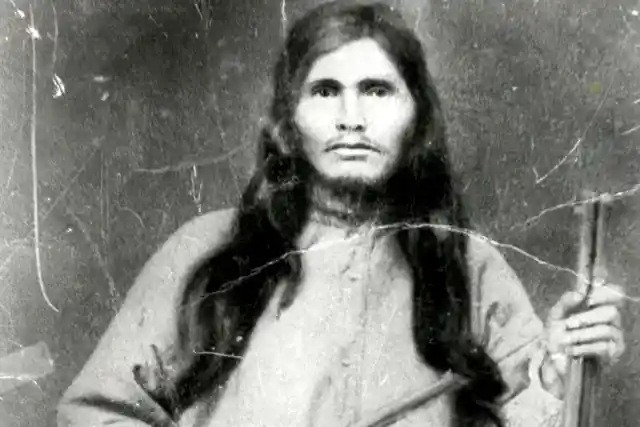
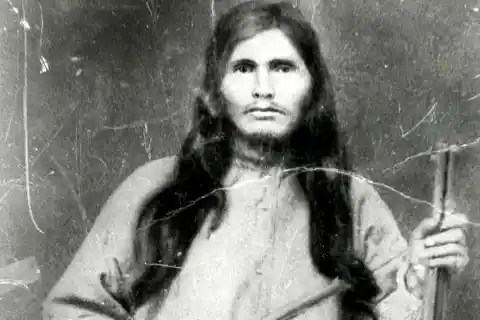
had officially declared him as an outlaw, forcing Christie to be a fugitive in his own land. Two years later, the U.S. law enforcement burned down his home as a way to give himself up, but he managed to escape. Shortly afterwards, though, he was eventually killed by lawman. Sadly, according to a testimony given in 1918, Christie was wrongfully accused.
Geronimo was the leader and medicine man from the Bedonkohe band of the Apache tribes. He later would be known for uniting a number of Native tribes – the Tchihende, the Tsokanende and the Nednhi - against their American and Mexican enemies. For the Apache tribe, the call to arms began with the settlement of Americans on the Apache land, which followed the war with Mexico in 1848. Geronimo was never considered a chief, but it was obvious early on that he was a born leader, causing many of the Apaches to willingly follow him.
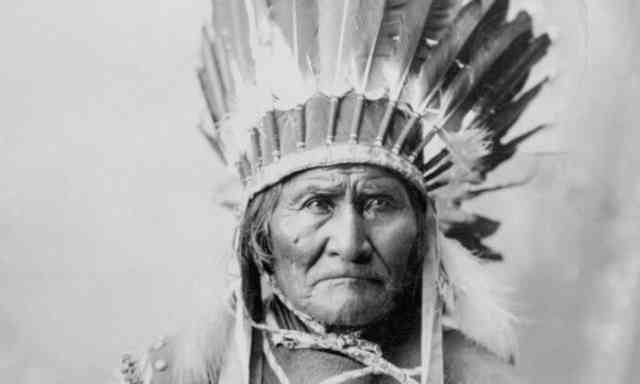
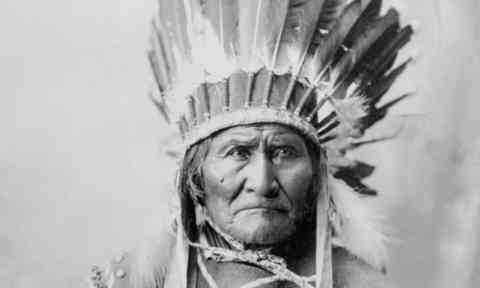
Sadly, Geronimo and the Apaches eventually surrendered to the U.S. forces. In 1909, he died at Fort Sill hospital as a prisoner of war.
In the late 1800s, you could make a lot of money mining gold, silver or copper. Owning the mine netted you the biggest profits, but the miners themselves also made out big. That is, of course, if they could manage to find the gold.
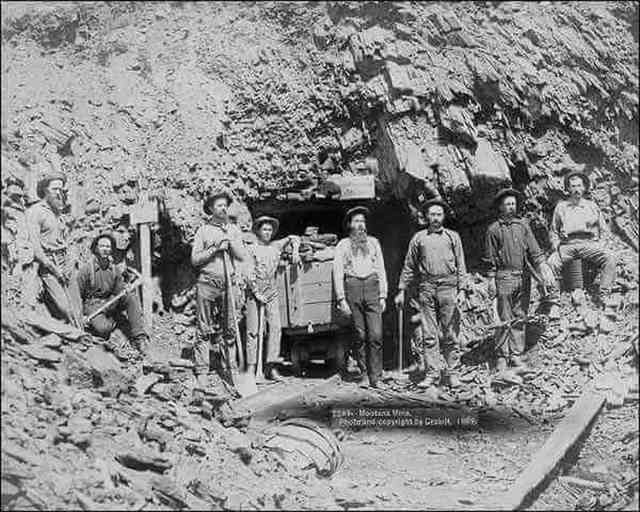
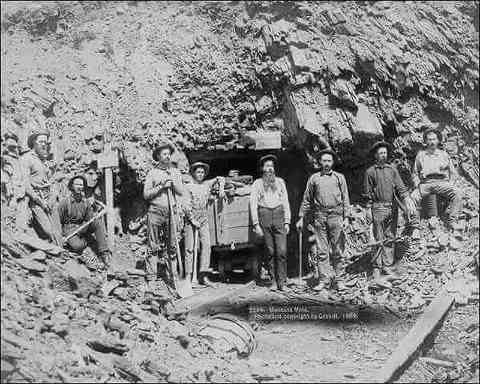
Though many dreamed of finding a bonanza (an exclamation made when discovering a large valuable ore), few were so lucky. The chances of a prospector finding anything of mass value was extremely slim, mostly because of the tools that they were using. However, that didn’t prevent some from striking gold and yelling at the top of their lungs, “Bonanza!”.
Guns were an integral part of survival in the wild west and everyone had one. Since photographs were a relatively new invention and very exclusive, many cowboys were filled with pride when their photograph was taken. They always made an extra point to show off their guns. Though there is this notion that the Wild West was a shooting coral and everyone was free to own a gun – that was simply not the case.
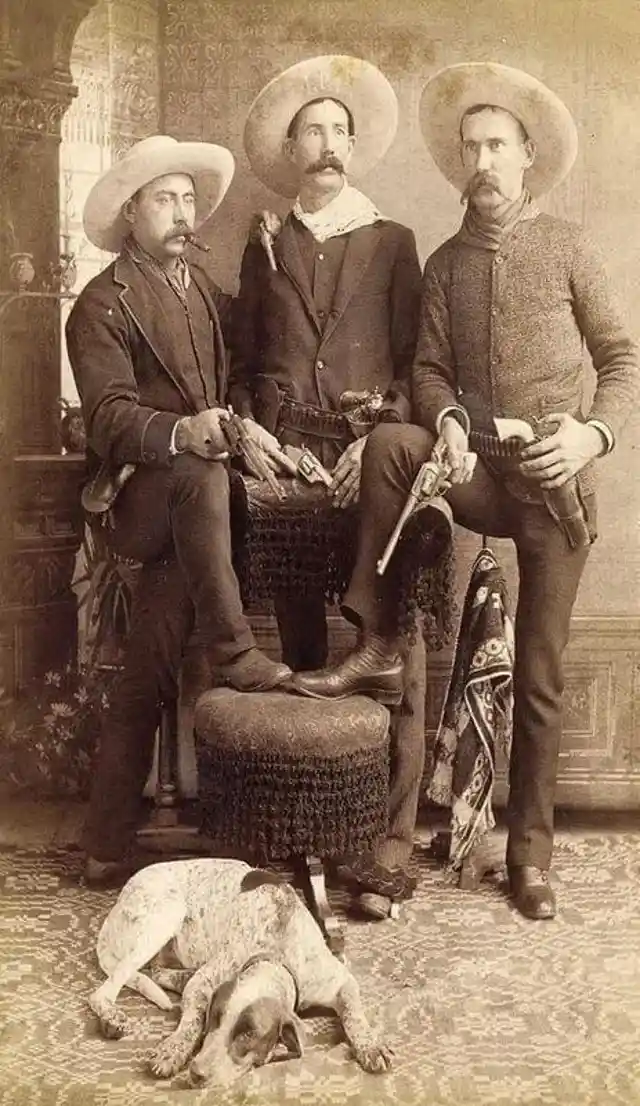
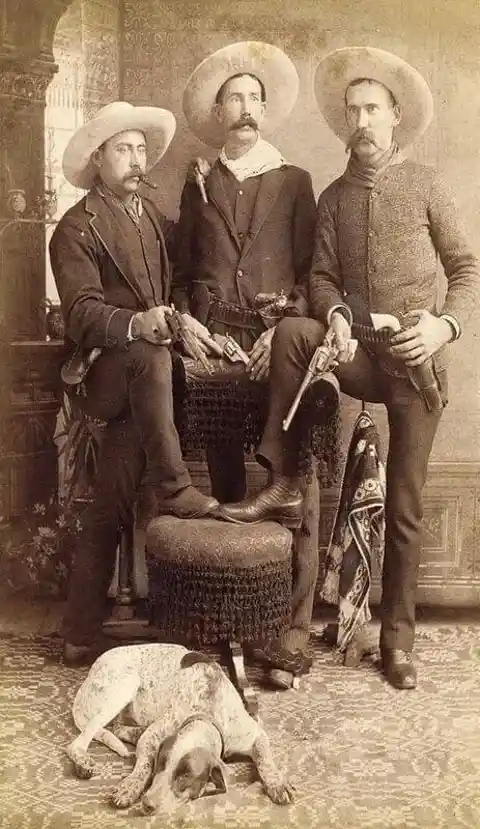
Believe it or not, there were gun laws even in the lawless West. It was lawmen against cowboys back in these days, and there was need to constrict guns to keep the community safe. Though these laws never passed at a Congress level, they reached the locals and were implemented quickly.
Laura, also known as “Rose of the Wild Bunch” learned the trade from her father who was a bank robber. This female rebel was remembered for her “rough” looks, and romantic involvement with several outlaws from the Wild Bumch. She eventually gave up her life in crime after serving several years in jail.
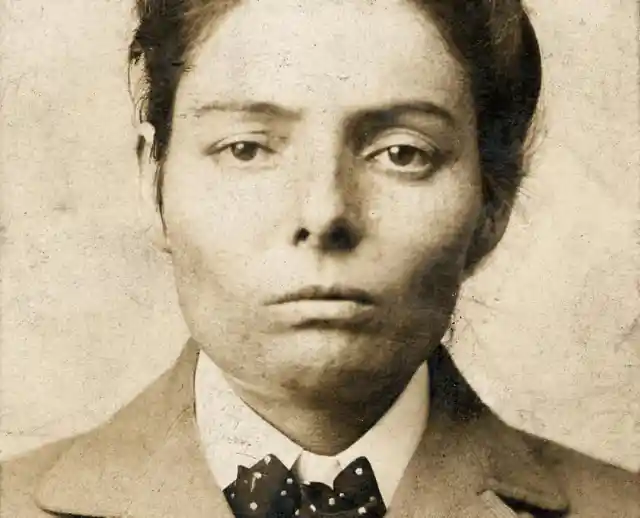
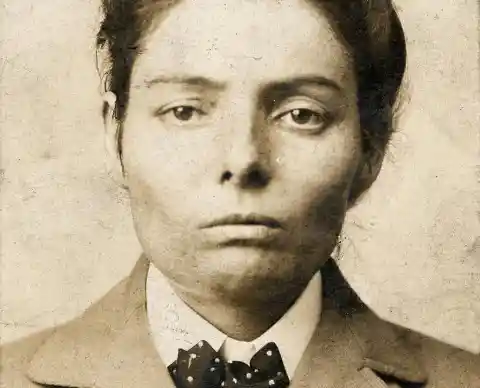
She later moved to Memphis, Tennessee where she posed as a war widow and used a different name as a way to escape from her past and start anew. She lived out the rest of her life taking on a variety of jobs, such as an interior designer, but later died in 1961 from heart failure.
This is probably one of the eeriest photos we’ve ever seen. There is just so much going on in this one photo. First off, why is the girl, we presume, wearing a mask? Who is the figure behind her?
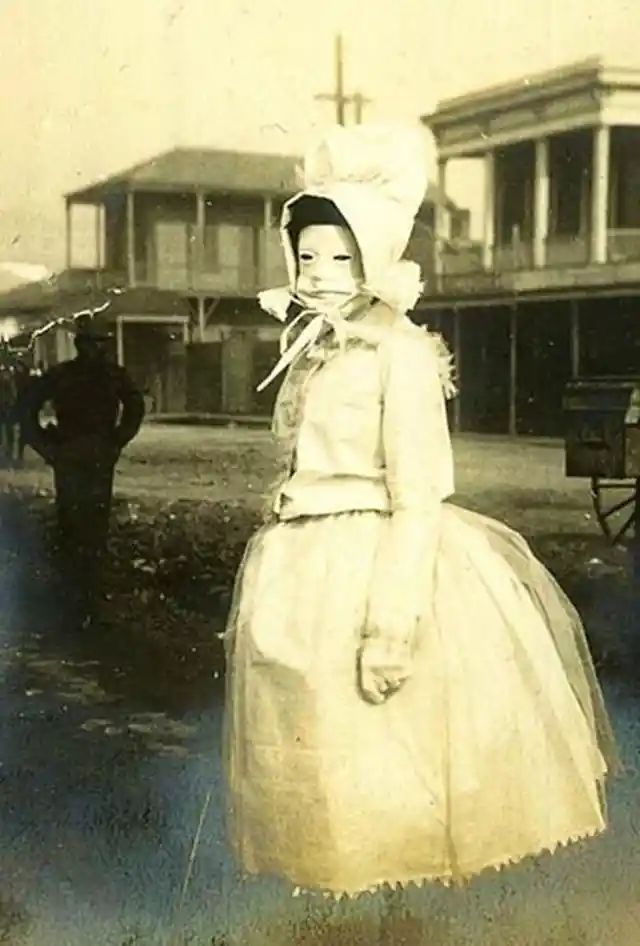
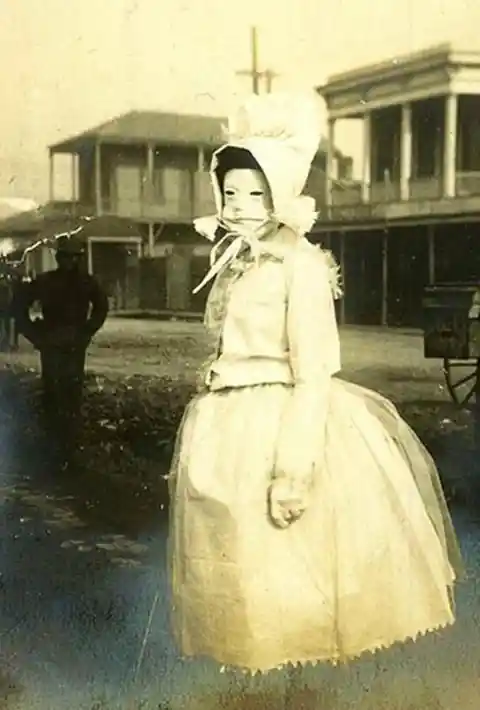
Most importantly, where are her legs? Unfortunately, none of these questions can be answered due to the fact that there is not much information behind this seriously disturbing picture. There is not even a date on this photo. With no reason as to why this photo exists, it just makes this sight all the more unnerving, making this westworld host that we have ever seen!
Rufus Buck started a short-lived, but deadly, gang made up of part-Creek Indians and African-Americans. They killed many, including U.S. Deputy Marshal John Garret, robbed, and raped at least two women who died of their injuries.
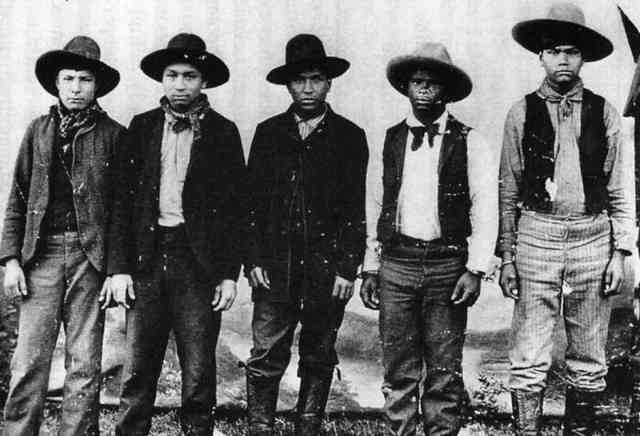
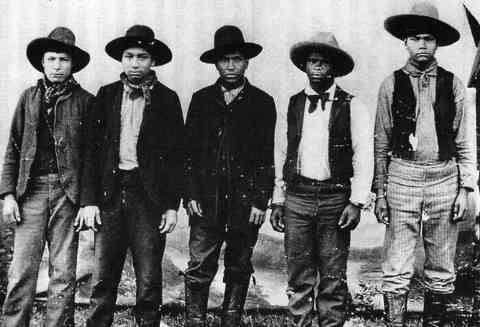
They infamous gang was eventually captured by the Indian police of the Creek Light Horse. The Creek wanted to hold the men for trial but they were soon brought before “Hanging” Judge Isaac Parker, who sentenced them (you guessed it) to be hanged. The orders were given out and the Rufus Buck Gang were hanged on July 1, 1896 at 1pm at Fort Smith.
Two Oglala Lakota Natives, known as Elk and Black Elk, were part of Buffalo Bill’s Wild West show. They traveled all around the world with the show and were famous for dancing while wearing shells and bell. While the show set sail for the United States in 1888, Black Elk became separated from the group.
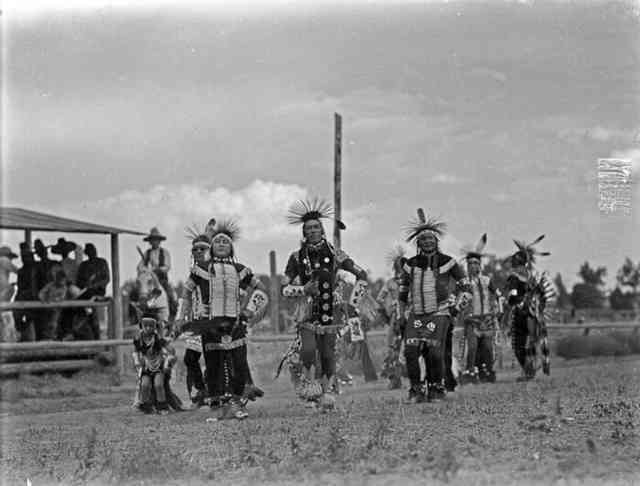
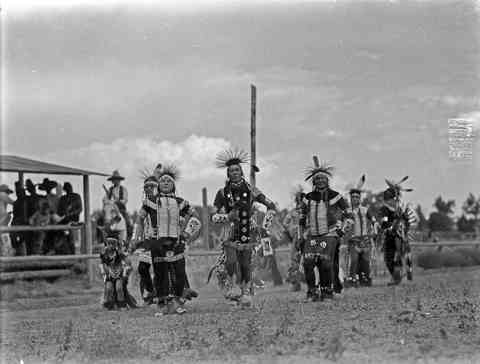
Eventually the boat took off and Black Elk, and three other Lakota’s, were stranded. With nowhere else to turn, Black Elk and the other joined another show where they traveled Europe. While in France, Black Elk reunited with Buffalo Bill, who gave him a ticket to return home to Pine Ridge in 1889.
When the name Jesse James comes to mind, most people think of an unstoppable outlaw who would go to great lengths to follow through with a crime. The last thing many probably forget was that he was both a husband and a father. Turns out, this dangerous outlaw had another side to him that was kind of “soft”. Here is a picture of his two children taken in the 1800s - Jesse (E) Jr.
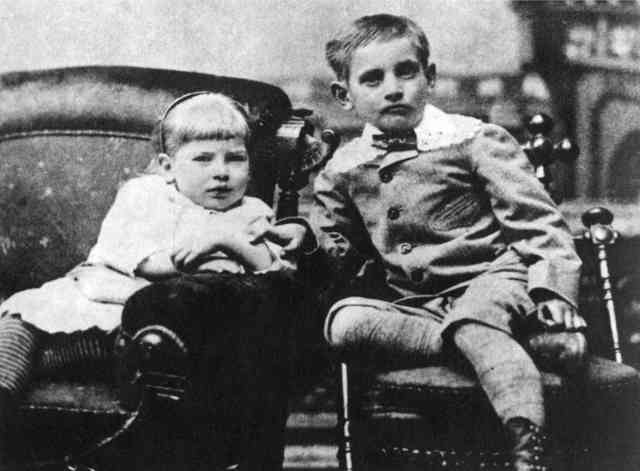
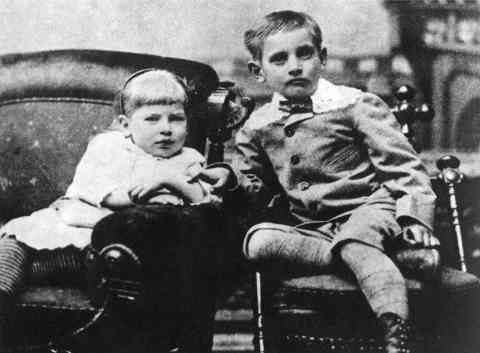
James and daughter Mary Susan James. The two children were born in Nashville, Tennessee under the aliases of Mary and Tim Howard. They were also present when their father was assassinated by Bob Ford in 1882. Apparently, having a father is considered one of the Wild Wests’ famous outlaws comes with its own set of issues.
This rare photo of Jesse James was taken on July 10, 1864 in his home town of Missouri when he was just 16-years-old. We don’t know if there was anything significant about that specific date, but what we do know I this is just on year after his family was attacked in their home by union soldiers seeking information. Many believe this incident is what lead Jesse to join the confederate guerillas.
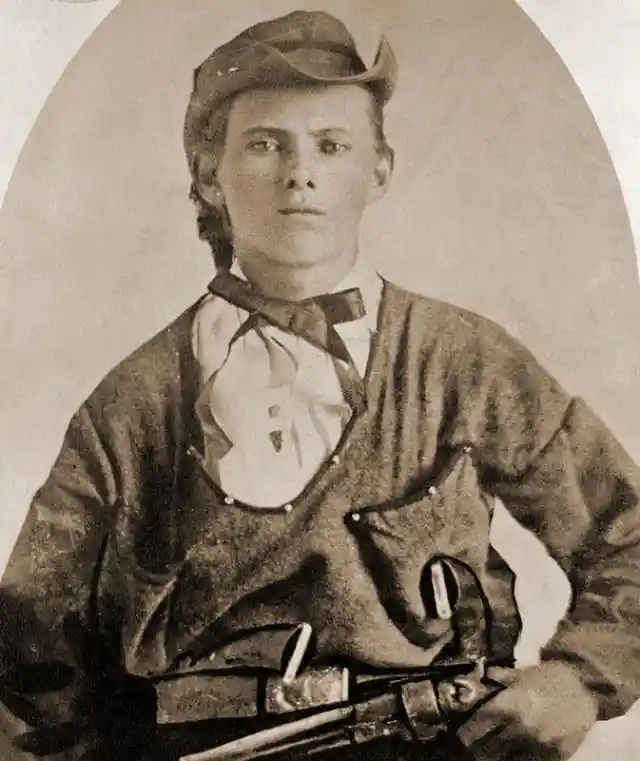
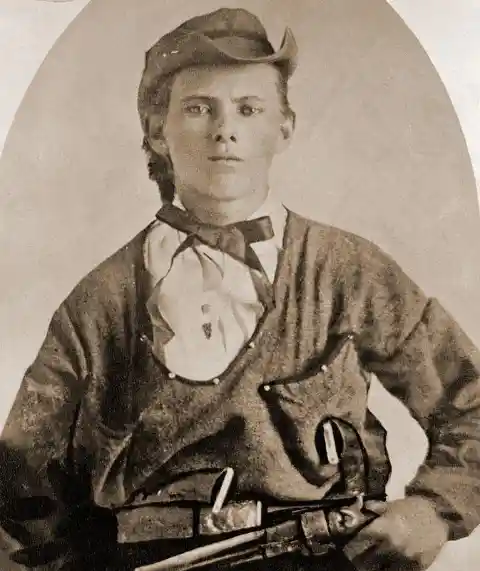
Though James is considered for being a hero, there is actually no evidence to support that he shared his loot with those less fortunate. Nevertheless, that doesn’t prevent from James being one of the most iconic figures of the Old West, which is why his life has since been memorialized and dramatized many times.
Buffalo Bill’s biggest attraction was his cowboys and their gun fight re-enactments. The best cowboy sharpshooters made it into the show. They had to pass an audition to prove their skill. The show paid them very well so they never had to worry about financial problems. Due to the benefits and the chance of fame, the show would contain as many as 1,200 performers at one time.
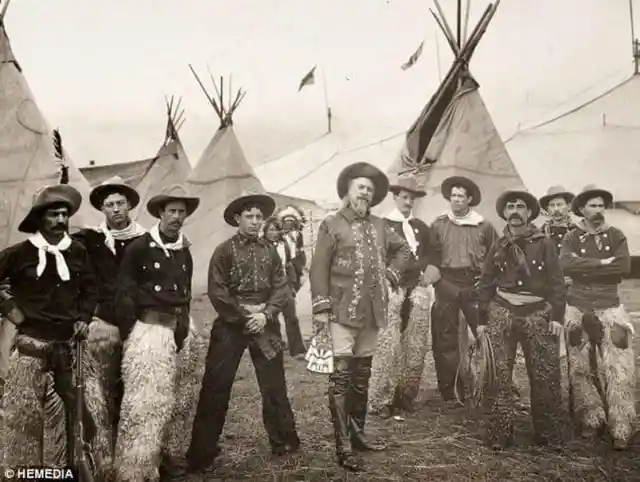
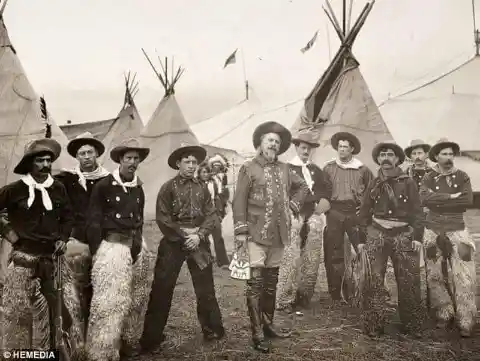
Many famous cowboys have passed through the show, such as Johnny Baker, Coyote Bill, and Jess Willard to name a few. Women were also a large part of the show. Annie Oakley in particular gained recognition after she defeated Frank Butler in a sharpshooting competition at the age of 15. She was late billed in the show as “Miss Annie Oakley, the Peerless Lady Wing-Shot”.
There were quite a few female gunslingers and outlaws back in the old Wild West. Big Nose Kate, for example, wasn’t only the famed outlaw Doc Holliday’s wife, she also helped him escape from jail by setting the jail on fire. Having a firearm wasn’t a luxury; it was a necessity in order to survive in such a trailblazing time.
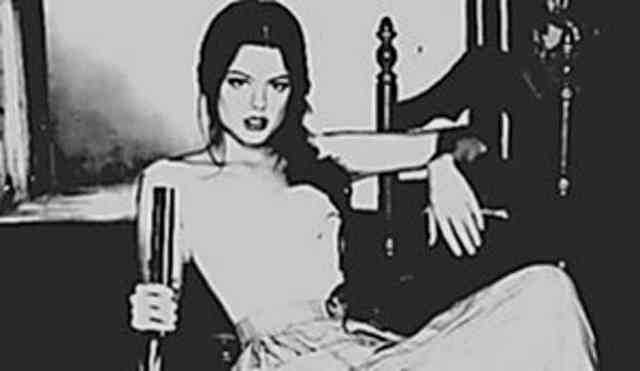
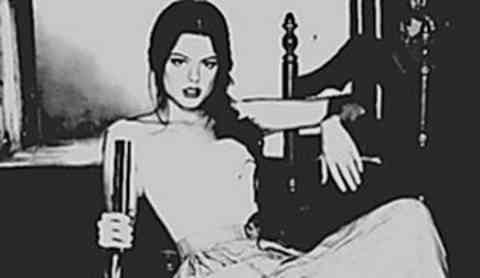
Besides the fact that families had to hunt for their food back in that time, they also needed them for protection. Though the protector role usually was the responsibility of the man, it was not uncommon for women to grab a pistol in self-defense. Only the tough could survive in the Wild West.
Rose Dunn, also known as Rose of Cimarron and later Rose of the Cimarron, fell in love with a wild west bandit named George “Bittercreek” Newcomb after being introduced to him by her brothers. During that time, Newcomb was with the Wild Bunch gang, who worshipped Dunn for her looks and demeanor. After some time, Dunn eventually accepted the outlaw life Newcomb had introduced her to. Her brothers, on the other hand, had left the gang life to turn to life as bounty hunters, becoming the Dunn brothers.
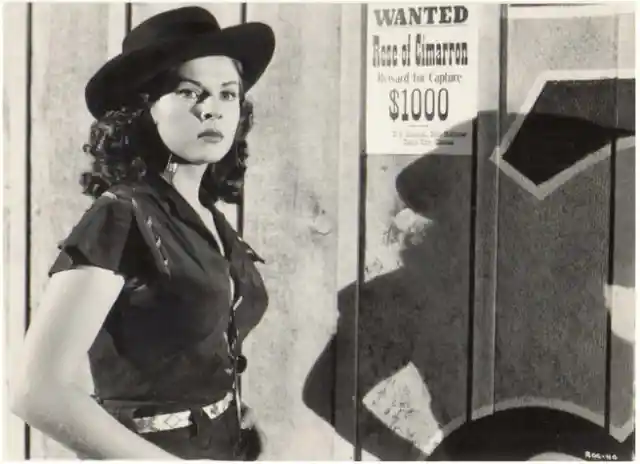
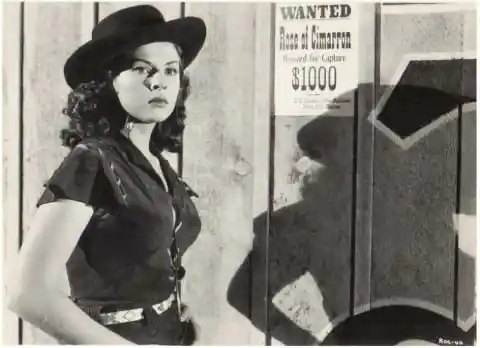
By 1895, there was a $5,000 bounty placed on Newcomb’s head. As the story goes, Newcomb and fellow outlaw friend Charley Pierce stopped by the Dunn household to visit Rose. There, her brothers killed Newcomb and collected the bounty.
This 19th-century man, shown in a Kansas City newspaper, is wearing the traditional garb of the wild west. The hat he’s wearing is a Mexican sombrero and was vital to survival in the harsh wild western climate. Many cowboys during that time opted to wear the sombrero, mainly because it was harder to get blown off their head.
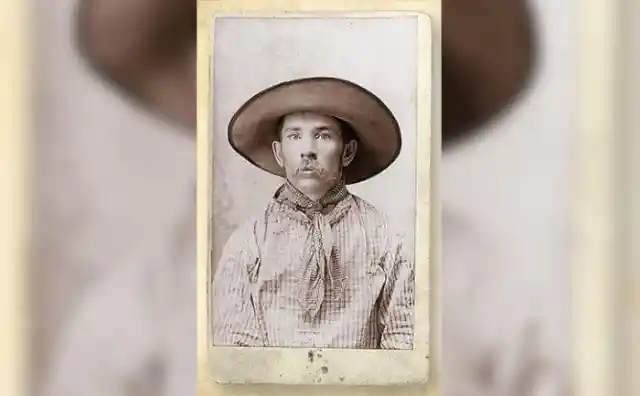
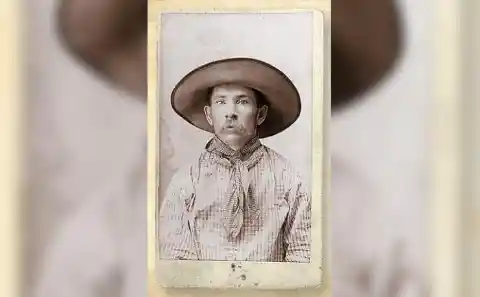
Later, the hats involved into the ten-gallon hats that we all know today. This man seems to embody the spirit of the frontier man, whose “Manifest destiny” was to expand into unknown territories. It was because of men like this that cowboys were admired and, honestly, overly exaggerated.
Kit Carson was an American frontiersman who helped develop California. He left his home at the age of 16 to become a mountain man and a trapper, going on many expeditions in the Rocky Mountains. He helped encourage more Americans to travel West through his tales of his expeditions through California, Oregon, and the Great Basin area. He was illiterate and spent a lot of time with Natives.
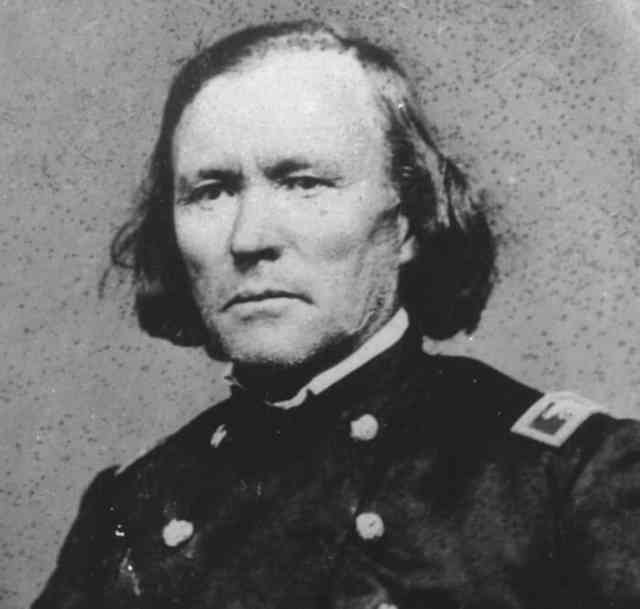
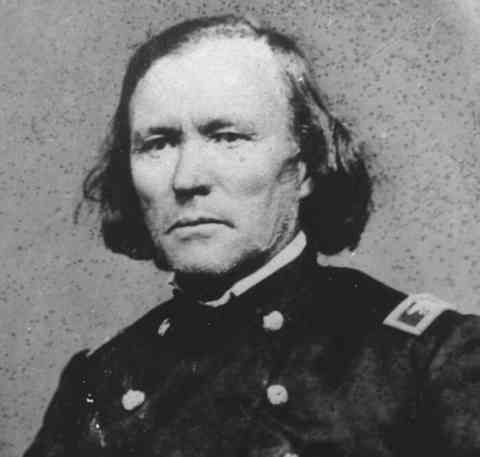
He even married two native women: one from the Arapaho tribe and the other from the Cheyenne tribe. After some time in the military, Carson was forced to retire due to poor health. Carson died of aortic aneurysm in 1868, leaving being a total of 10 children and buried next to his third wife, who was of Mexican origin, Josefa.
General Custer had risen in the ranks during the Civil War and the American Indian Wars. He experienced much success during his military career, but he will forever be remembered for his massive failure at the Battle of the Little Bighorn. On June 25, 1876, Custer lead his cavalry in Montana territory where a union of Native Americans awaited their arrival.
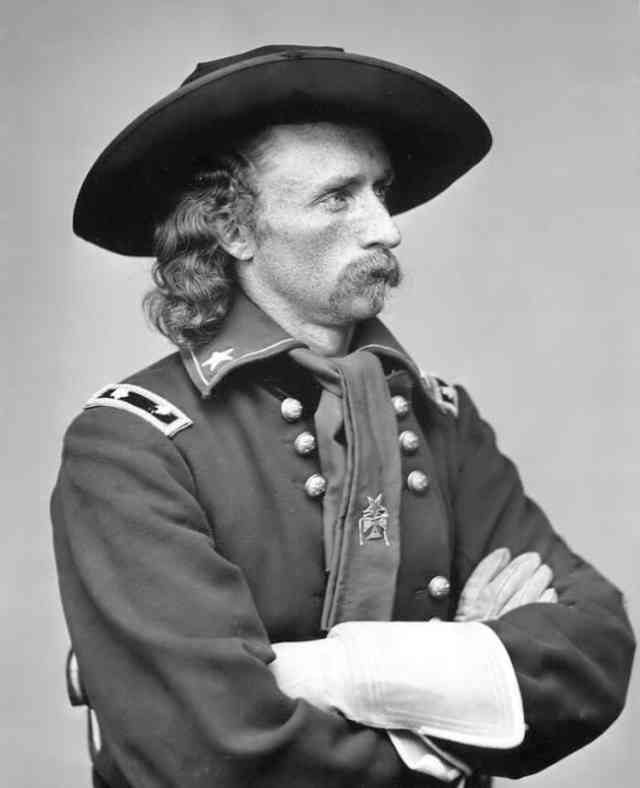
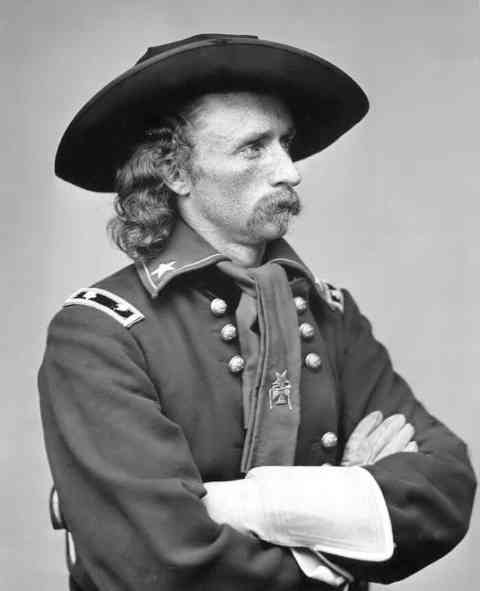
The main reason for Custer’s swift defeat was due to the fact that his roughly 600 men army were greatly outnumbered by the 3,500 Indian warriors that were prepared to meet them. At “Custer’s Last Stand”, Custer was killed along with over one third of his command. To this day, his legacy of his fierce leadership still exists, but the legends were mostly fabricated by him and his wife.
Frustrated for not being paid their wages, The Dalton brothers decided to take matters into their own hands. In 1890, they made the choice to become outlaws, specializing in bank and train robberies. They managed to stop quite a few trains for about two years, but their life mission as outlaws came to a halt when they were caught robbing a bank in Coffeyville, Kansas in 1892. Two of the three brother were shot and killed.
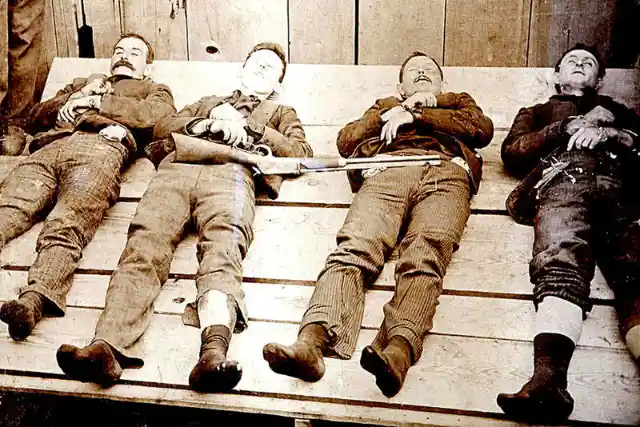
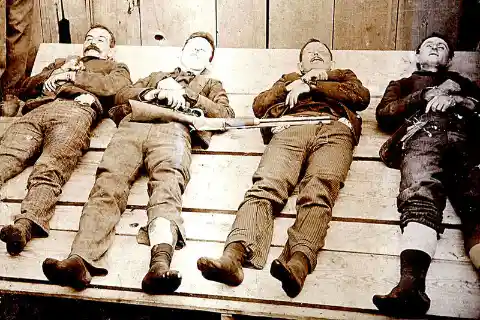
Two other gang members were killed as well. After receiving 23 gunshot wounds, Emmet was the only survivor. He was tried, convicted, and went on to serve 14 years in jail. After his time, Emmet went on to become an actor in Hollywood.
In the late 1800s, photographer John C. H. Grabill sent 188 photographs to the Library of Congress for copyright protection. His photos chronicled the development of South Dakota, Wyoming, and Colorado, as well as its effects on the local Natives. He had studios in Buena Vista, Colorado, South Dakota, Chicago, Lead City, Hot Springs, Sturgis, and many other places.
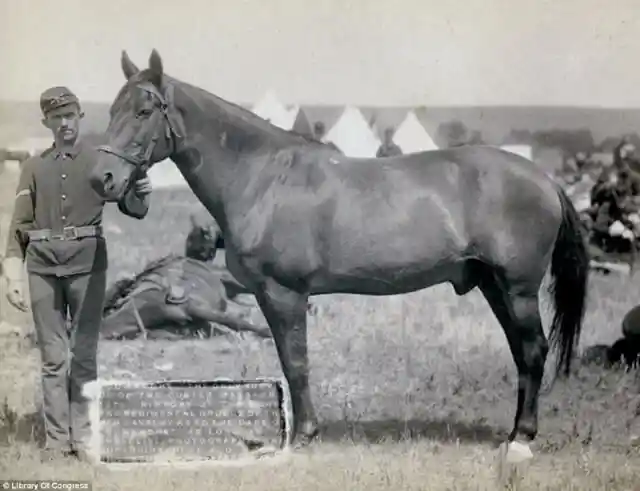
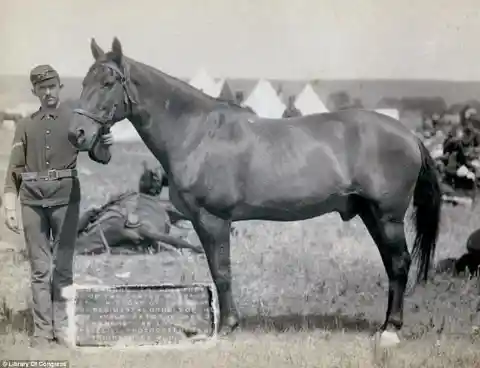
He was also the official photographer of the Black Hills and Fort Pierre Railroad and the Homestake Mining Company in South Dakota. Sadly, due to the exposure of mercury in the mines, Grabill became mentally ill towards the end of his life and ultimately died of mercury poisoning. Grabill was buried at St. Matthew’s Cemetery in St. Louis a day after his death.
Pearl Hart, a Canadian-born outlaw of the American Old West, gained notoriety just before the turn of the 20th century as a female stagecoach robber. She cut her hair short, dressed in men’s clothing, and was eventually sentenced to five years in prison, but pardoned after three years. She started her life a robbery so that she could help her mother, who was seriously ill.
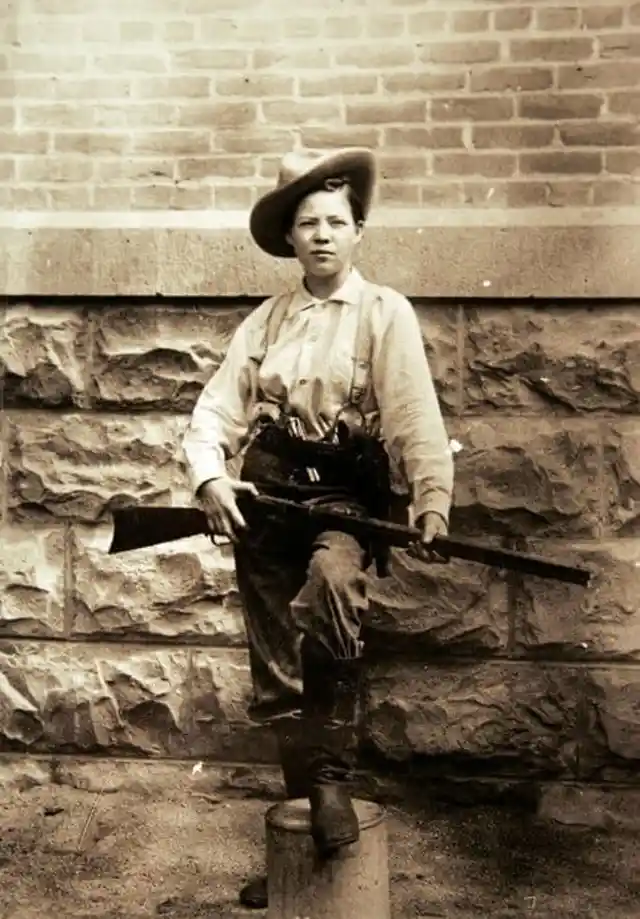
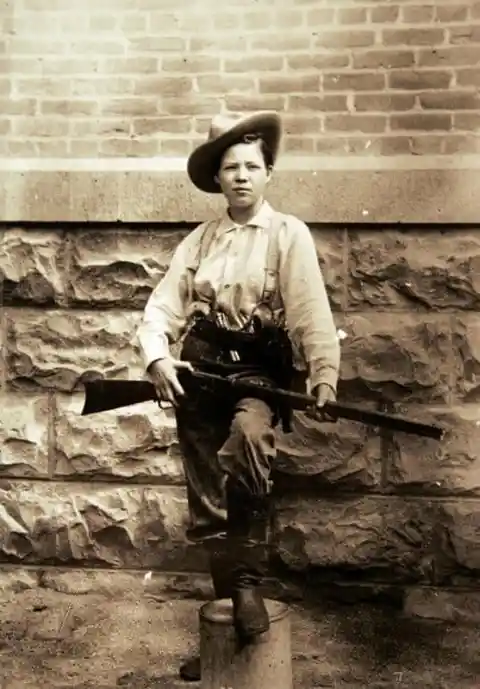
She tried to make it big in the mining industry, but, like so many were slowly realizing, it was a tough way to make the money that she needed. This prompts her to rob a stagecoach, and the rest was history.
Traveling across the wild west was very dangerous. Many rich travelers had to hire armed men to protect them on dangerous routes. These overland trails, especially the Sierra Nevada Mountain Trail, became vital for traveling immigrants and pioneers as it was a faster way to reach their destination than compared to a boat, per say.
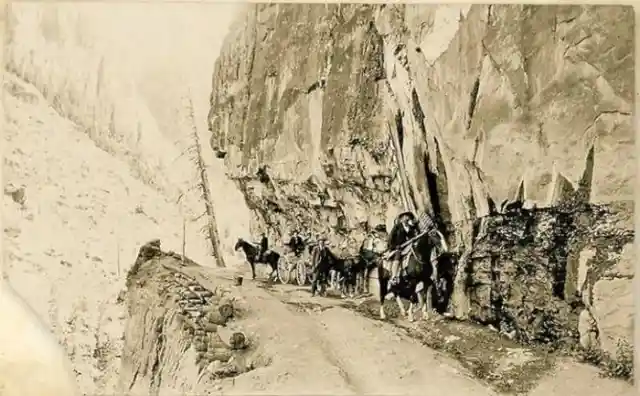
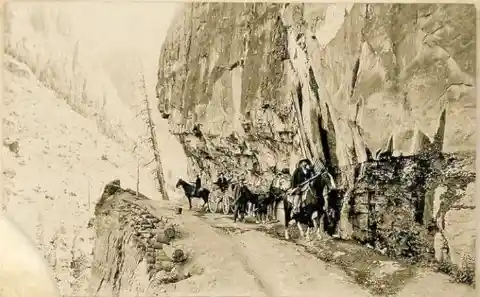
This trail and many other would become a part of Americas culture as they paved the way to expansion. Even today, there can still be found traces of old trails throughout the American West. Hard to imagine how many people have passed through this trail.
One of the most successful cavalry regiments on the Confederate side of the Civil War was Terry’s Texas Rangers. The regiment was formed in 1861 and was involved in at least 275 engagements in seven states, distinguishing themselves at several battles during the Civil War. Over time, the Rangers was ranked as one of the most effective mounted regiments in the Western Theater of the American Civil War.
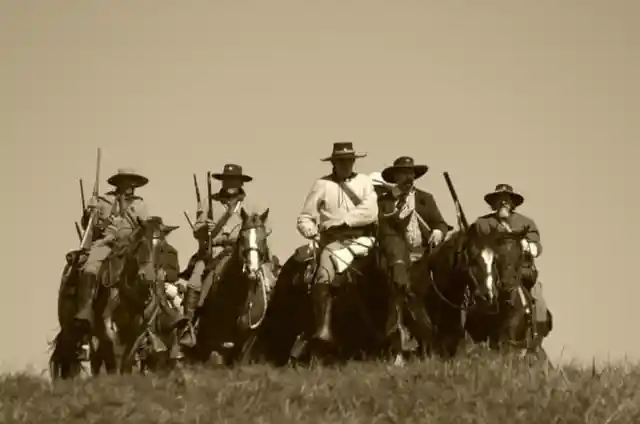
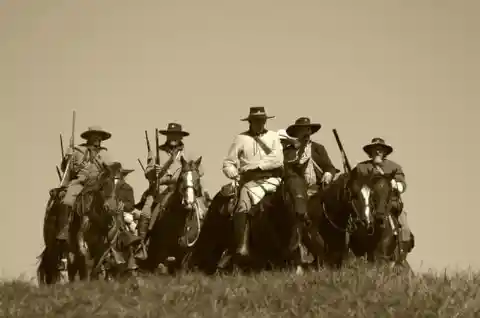
The last engagement that the group had was at the Battle of Bentonville where they lost three of their officers. They eventually surrendered on April 26, 1865, officially dissolving the group along with the rest of the Army of Tennessee.
Back in the 19th century, people moved around, just not as frequently as they do today. Here is a couple taking a break in Kansas as they head west to start a new life. Migration has always been such a big part of the American culture, which is obvious when the country went through a massive expansion in the West.
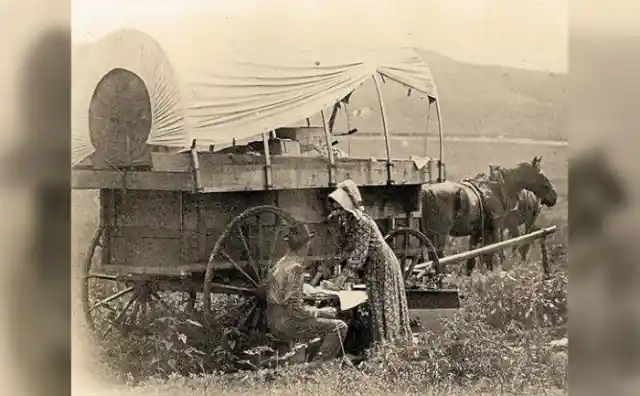
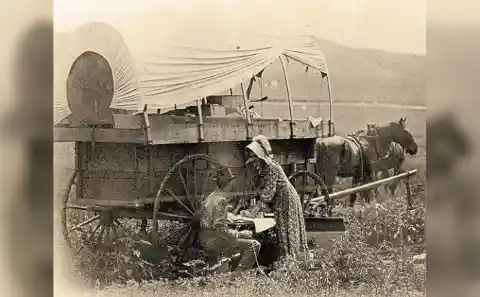
Numerous individuals packed up their entire lives and traveled to unknown land in order for a change, but, most importantly, for new opportunities. Though the West was considered savage and mysterious, it didn’t stop millions from traveling across the country to a new destination.
This picture depicts a true cowboy, Charlie Nebo, along with his partner Nicholas Janis. Charlie never tried to inflate his achievements and was happy to live like a true frontier man. He always referred to himself as a cow-puncher, which makes sense given that he herds cattle for the majority of his adult life.
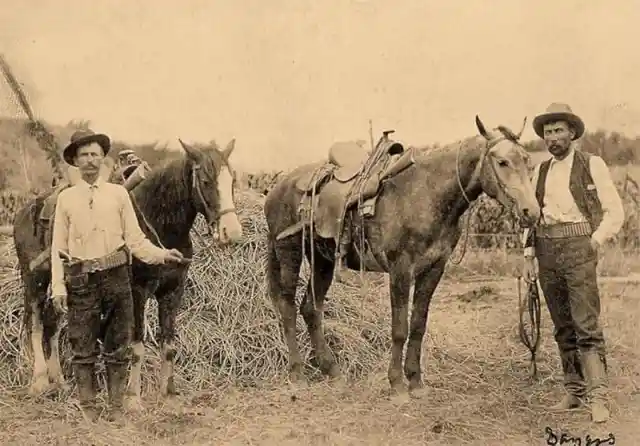
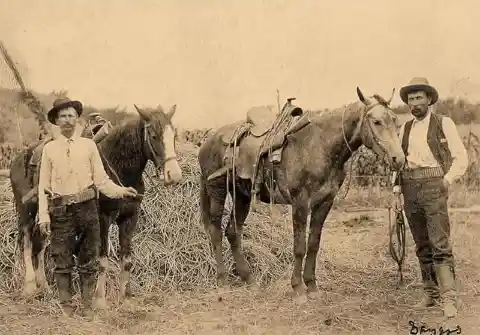
In truth, Nebo represents the best qualities of the Wild West – a tobacco-chewing man who enjoyed the simple things in life. This photograph had a handwritten note at the top which says, “The Genuine Cowboy Captured Alive”. Most likely, Nebo was just passing through, especially since he never liked to stay in one place for too long.
Buffalo Bill, whose real name was William Cody, started a very popular “Wild West” show in 1883 that lasted for several decades. The show toured around the U.S. and Europe, and had many acts, including gun fight re-enactments. One of the shows biggest performance was the Chicago World’s Fair.
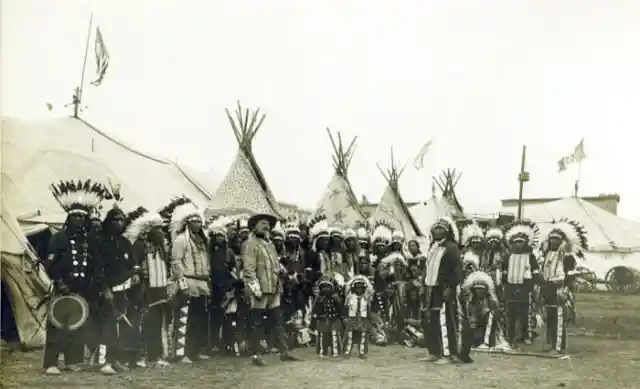
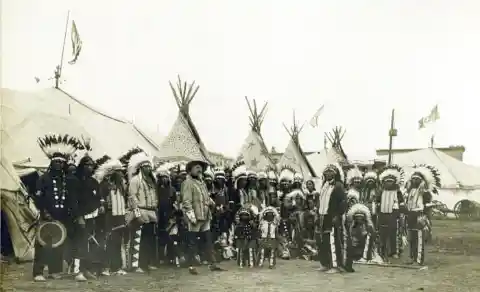
There they put on show for an audience of about 18,000. After that performance, unfortunately, the show was never the same again. As depression began to hit the country, and the western ideal was slowly drifting away, so did Buffalo Bill’s Wild West Show. Though Cody strived to keep the show alive, it finally ended in 1913 when it declared bankruptcy.
Santiago ‘Jimmy’ McKinn was a 12-year old, who lived with his family in the lower Mimbres Valley in New Mexico. One day, while out with his older brother, Martin, a group of Chiricahua Apache led by Geronimo approached the two and then quickly killed Martin and abducted young Santiago. There he joined Geronimo’s band and refused to return to his family since he grew to love his “new” family.
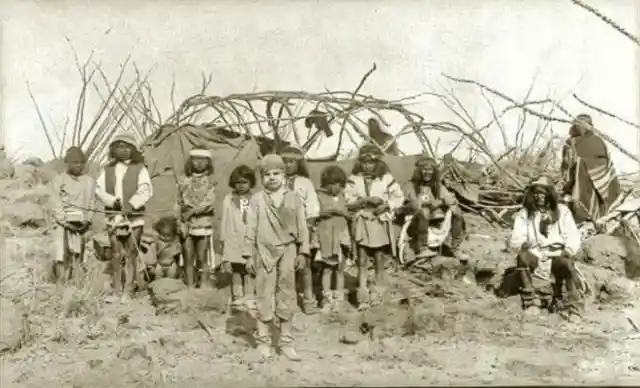
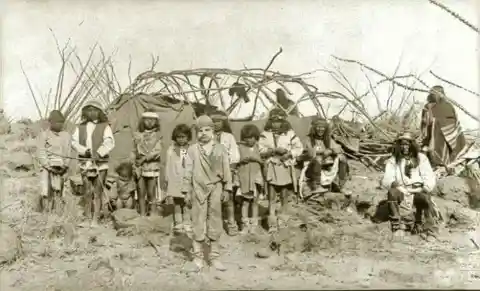
He eventually became a war chief of the Chiricahua Apaches, and vowed to attack any Mexican village he came upon since his family was brutally attacked by Mexicans. He was able to avoided the authorities for many years, but ended up surrendering in 1886. From then on, he was held as a captive and died from pneumonia in 1909 at Fort Sill, Oklahoma.
Apparently, fashion wasn't the biggest area of focus during the wild west days. These women took part in the popular job of gold mining. Many people started moving out to the west with the dream of striking it rich digging for gold.
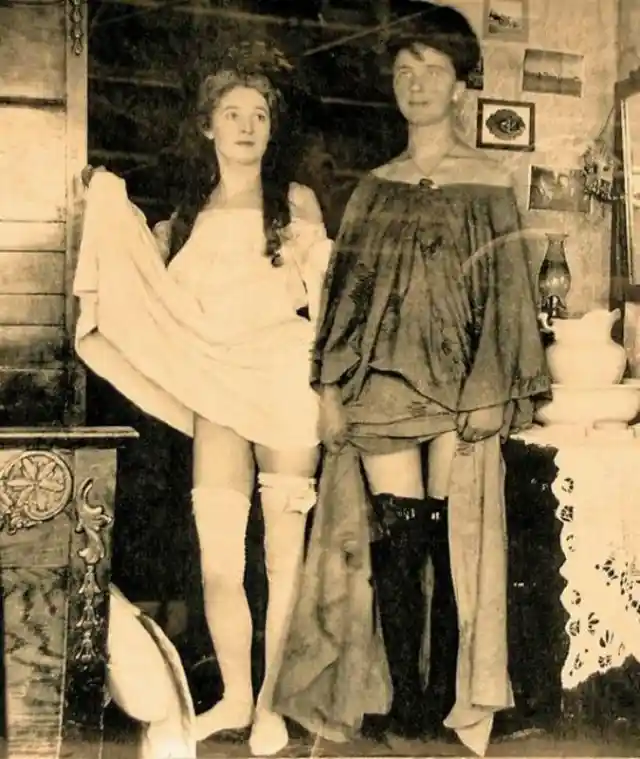
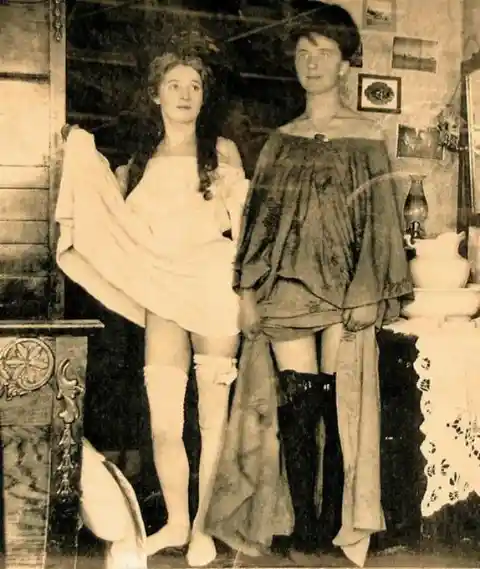
While these ladies seemed not to have put much attention into their clothes, western wear has evolved into a unique style that was made popularized in the 19th century. The style can range anywhere from a pioneer to a cowboy or a mountain man to a Civil War soldier. The most typical version of the Wild West garments is the cowboy, which can not be complete without the cowboy boots and hat.
This photo depicts the different personalities of these "Wild West Outlaws." While some were cold blooded killers, others seemed to have a sense of humor. As if swapping hats is going to disguise one another. Though when people tend to thinking of the Wild West choice of hats, they often picture a cowboy hat.
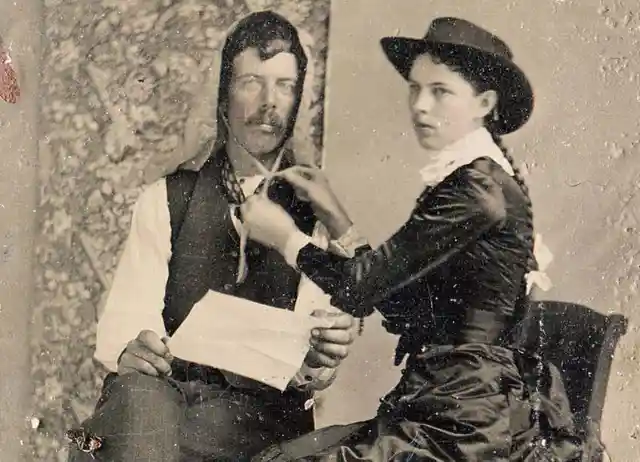
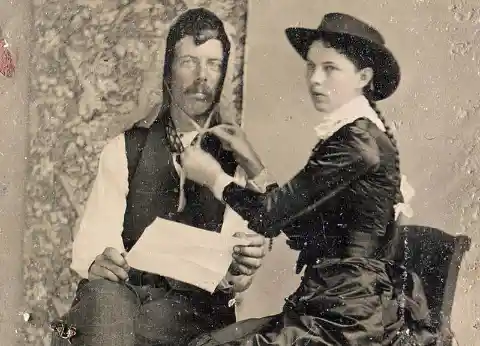
Truth be told, the bowler hat was the popular choice of headgear in the early Old West. Later it evolved into the sombrero which was favored by the cowboys since it was less likely to blow off their heads. Eventually though, that lead to the cowboy hat which remains an iconic staple of the western era to this day.
This female outlaw was a Wild West legend. She made quite the statement after she married Cherokee Sam Starr and got involved with horse stealing and bootlegging. She was caught for horse stealing and was put behind bars in 1883. Like most of these outlaws, in 1889, she was fatally shot and soon after died, after nine years of tying the knot with her partner in crime.
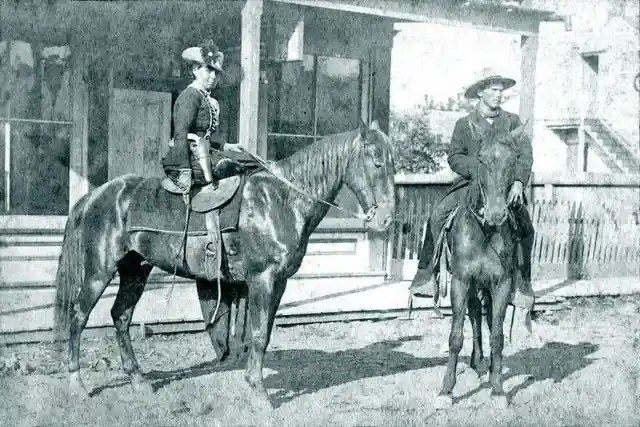
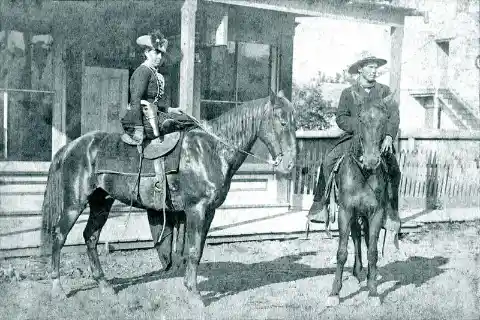
Since her death, the life of Belle Starr continues to live on. Her name became publicized after the editor and publisher of the National Police Gazette, Richard K. Fox, covered her story. She even rose to fame after being made into a television and movie character.
Spotted Elk was a chief of the Miniconjou, Lakota Sioux tribe. He was well respected amongst his tribe and is remembered as being a skillful diplomat. In addition, he was also a man of peace, and was known to have settled many massive wars, making him often in high demand among other Teton bands.
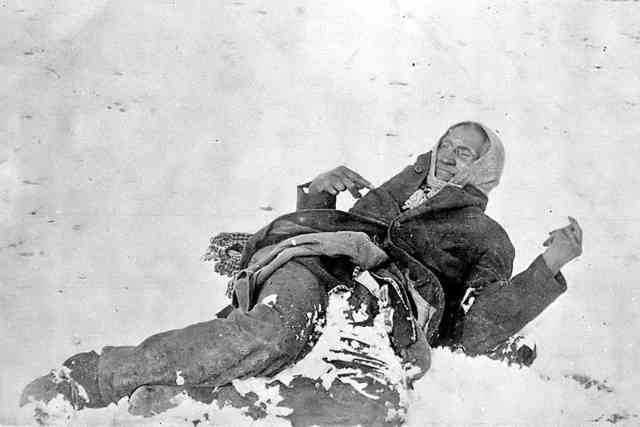
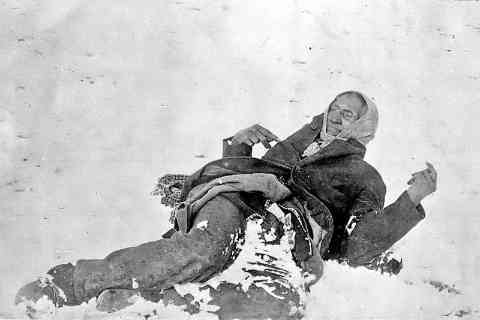
He was given the nickname Big Foot by a United States Army solider at Fort Bennett. Unfortunately for Big Foot, his last day was spent serving his people at the Wounded Knee Massacre in 1890 where he was killed along with 152 other innocent people, including women and children.
Maiman was a Mojave Native American who worked as a guide and interpreter in Colorado during the 1870s. Maiman acted as a guide for photographer Timothy O’Sullivan. With his knowledge and experience with the land, Maiman was able to show O'Sullivan the best locations to take his photographs.
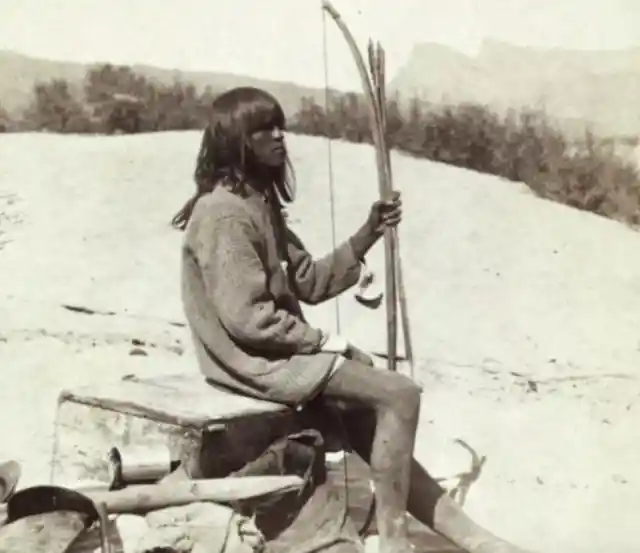
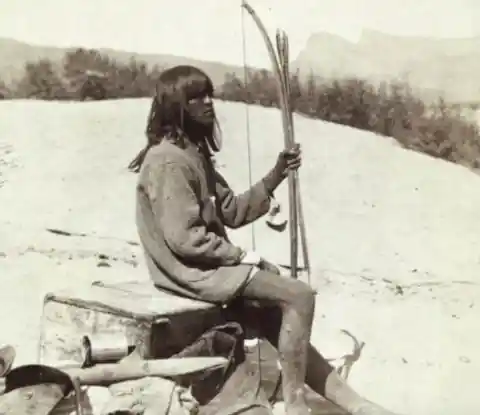
With Mainman’s help, O’Sullivan was able to capture amazing pictures of the West, which he used in an attempt to attract settlers to the unknown land. He clearly was fantastic at his job because, due to his photographs, he almost singlehandedly ushered in a plethora of individuals and families into the new land.
This picture was taken in 1889 inside a bar at the Table Bluff Hotel and Saloon in Humboldt County, California. The original building was built in 1852 by a man by the name of Van Aerman. Seth Kinman, an early settler of Humboldt County, ran the hotel/bar for many years, and also owned a home there.
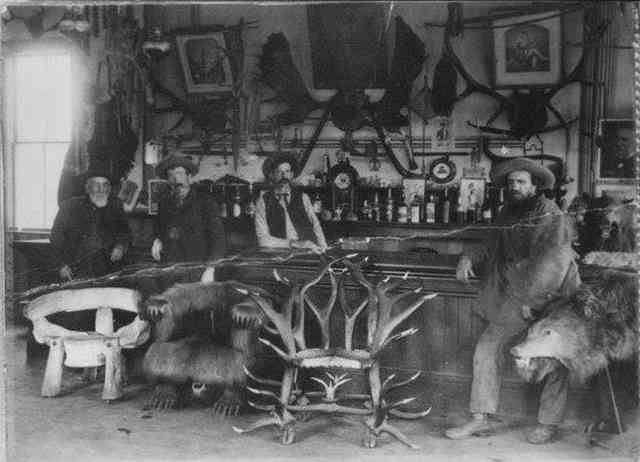
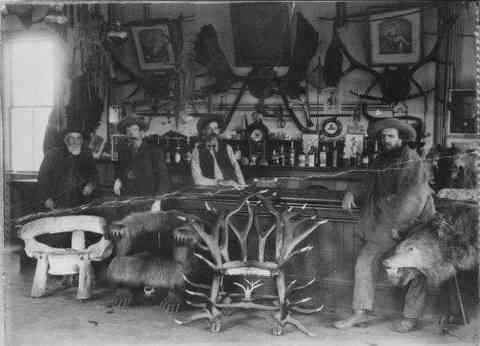
He was remembered as a hunter, a chairmaker, as well as a nationally recognized entertainer. In fact, Kinman actually was able to perform in front of President Lincoln with nothing but a fiddle that he made from the skill of a mule. To this day, he and his family are buried at the Table Bluff Cemetery.
This image shows 19th-century businessmen riding to Death Valley in search of the mineral borax. Death Valley in California is one of the hottest places on Earth, along with the deserts of the Middle East, and has even reached a record-breaking 134 degrees Fahrenheit. Death Valley was once home to the Native Americans of the Timbisha tribe, who inhabited the land for at least the past millennium.
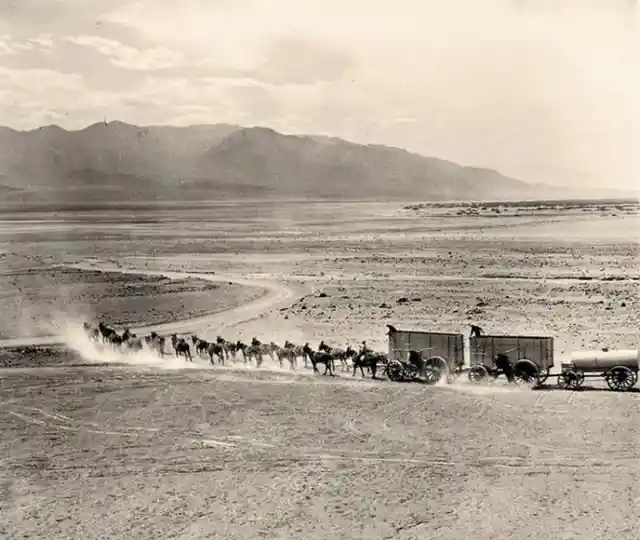
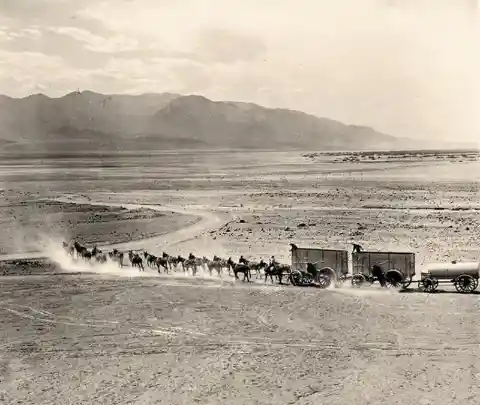
The Timbisha name for the valley was tumpisa which means “rock paint”, referring to the red ochre clay that is found in the valley. In 1849, the valley received its English name during the California Gold Rush. It was given the name after 13 pioneers perished as they tried to cross the great desert.
This is the ghost town of Eureka, Utah. It was founded in 1870 when silver and other ores were discovered in the area. At one point, the town was the 9th largest city in Utah, reaching about 3,900 people in population. Thanks to the mining industry, the town thrived and was producing much profit. Sadly, the success they were experiencing didn’t last long.
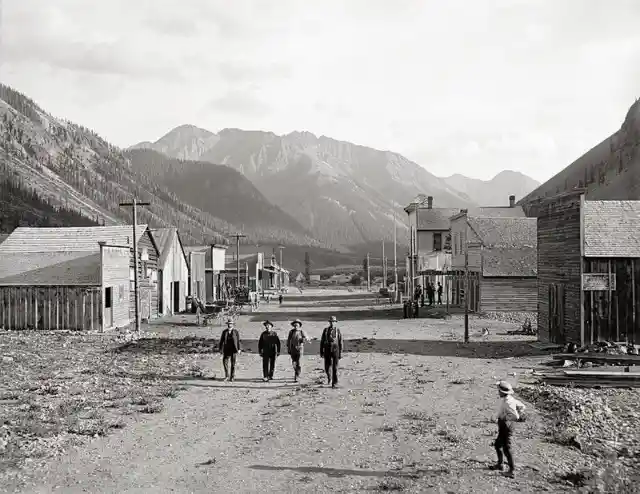
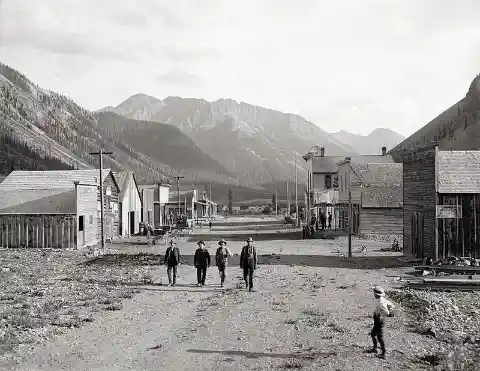
Over time, mines began to close down due to water and low prices. Eventually, all the mines around the town closed down, with the last mine vacated in 1957. Since then, the town has become a shell of what it once was. Since the town still harbored many buildings that were considered historic, Eureka was placed in the National Register of Historic Places in 1979.
Taken in 1873 near Fort Defiance, New Mexico, these Navajo people were some of the many who were dispossessed of their homeland during the treacherous Long Walk of the Navajo, also referred to as the Long Walk to Bosque Redondo. This event was a result of the deportation of the Navajo people that was given out by the government of the United States of America in 1864. Due to the governments attempt at an ethnic cleansing, the Navajo people were forced out of their homeland and were left to walk from what is now Arizona to New Mexico. The walk had a significant impact on the Native people, leading some anthropologists to claim that the “collective trauma of the Long Walk .
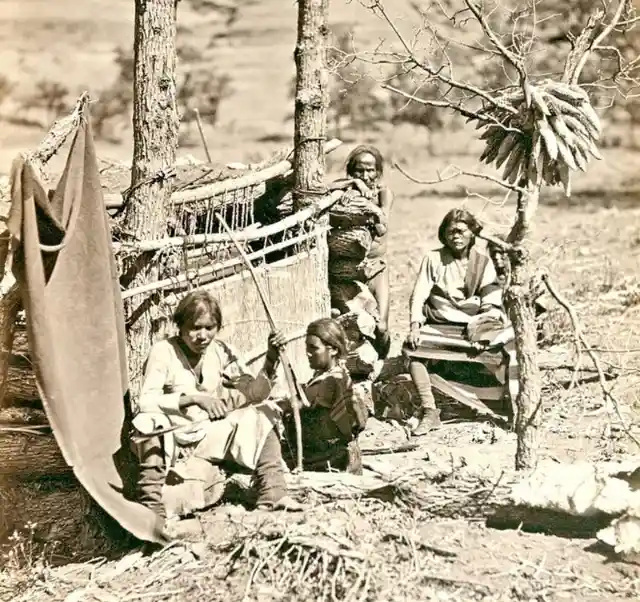
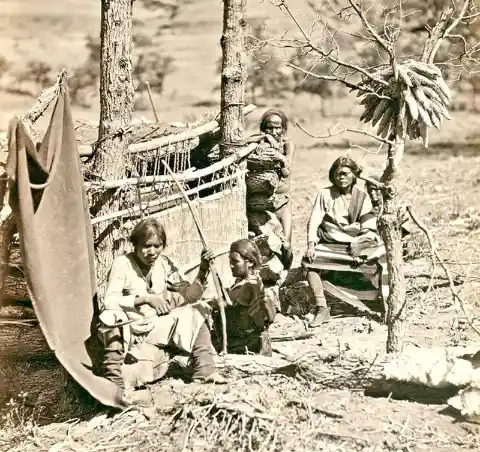
. . is critical to contemporary Navajos’ sense of identity as a people.”
Cameras were an extremely new invention for the Old West, which only made documenting the period new and much more difficult. Timothy H. O’Sullivan, one of the era’s most important photographers, traveled around with a mobile darkroom, carried here by four mules through the Carson Sink in Nevada.
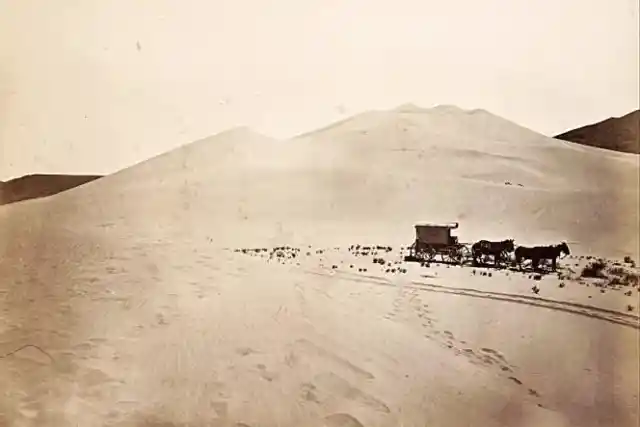
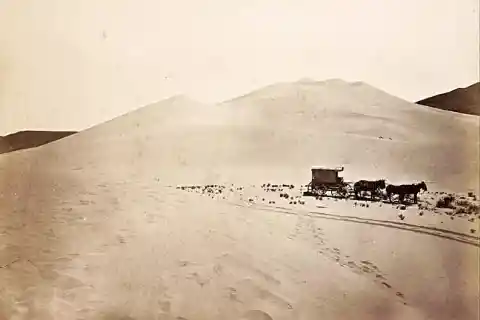
Due to his efforts, O’Sullivan was able to capture beautiful images of the American West. Through the 1860s and 70s, O’Sullivan created some of the best-known images in American History, influencing the people of his present as well as the many photographers that would come after him. As a result of his pictures, more and more people were eager to move the West.
It was actually quite difficult for cowboys to get a chance to bathe, given the circumstances of their lifestyles on long cattle drives -- which could last up to three months! Though Hollywood has romanticized the cowboy character, in reality the cowboy life is something that is not meant for everyone. The stench alone can deter even the bravest of people from this hard livelihood, and these men in the picture know it.
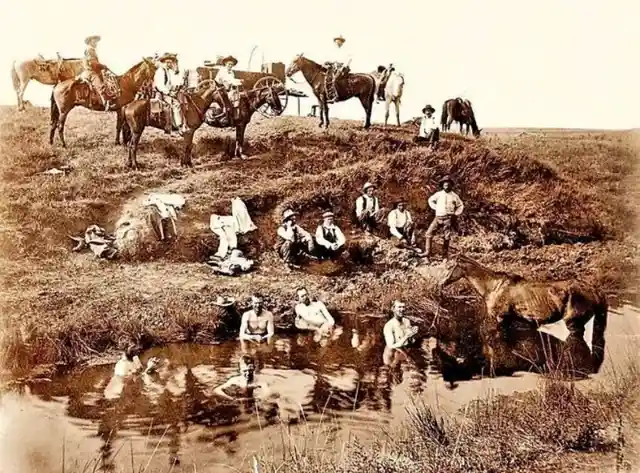
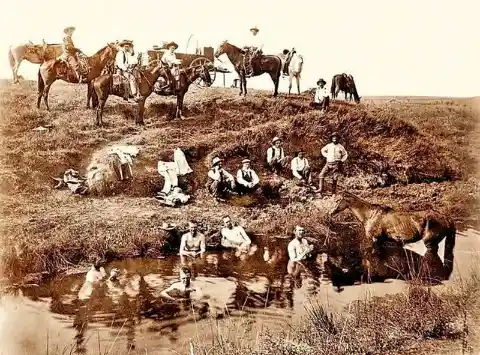
Cowboys, such as these, traveled with just the clothes on their bags and little to absolutely no toiletries, meaning that baths were a rare luxury. Due to their horrible hygiene routine, many cowboys during the western era fell victim to a variety of diseases, claiming a number of lives. Thankfully, the men in this photo seem to be taking cleanliness a little more seriously.
A little girl feeds the chickens in Sun River, Montana, 1910. The image eerily captures an overwhelming sense of isolation. When farmers traveled to the Wild West to start anew, many were eager for a better life but were met with a depressing site of barren land. The Great Plains turned out to be unkind to the farmers and their families.
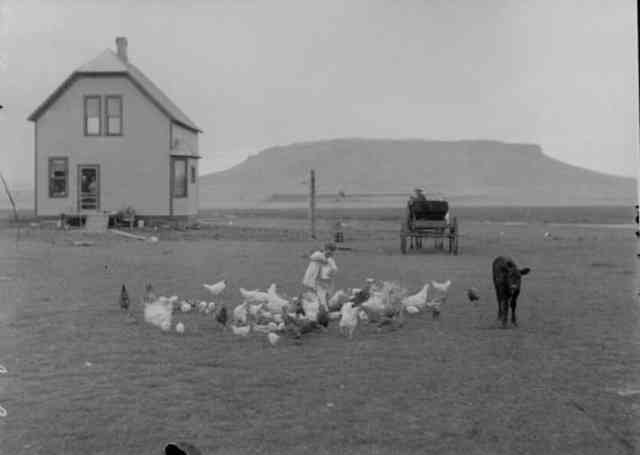
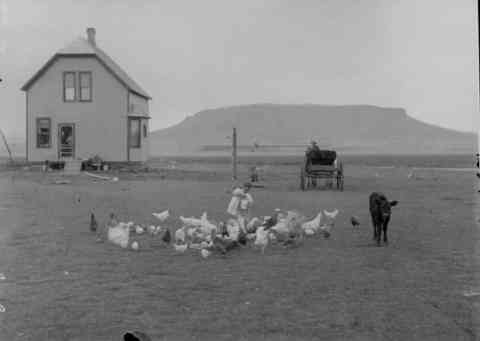
The summers were blistering hot and the winters were bitterly cold. Not to mention, the frequent droughts made it difficult for the farmers to make any profit. Plus, with their neighbors typically 160-acre or so away, communication was practically impossible, making their new life extremely lonely.
Captured in Genesee, Kansas, 1902, a real cowboy herding cows, with his lasso at the ready. The job of the cowboy was extremely important back in the day because they drove beef, which was in high demand in that time, to their desired location. Though many romanticize the lifestyle of the cowboy – in truth, the reality of a cowboy is far from glamourous.
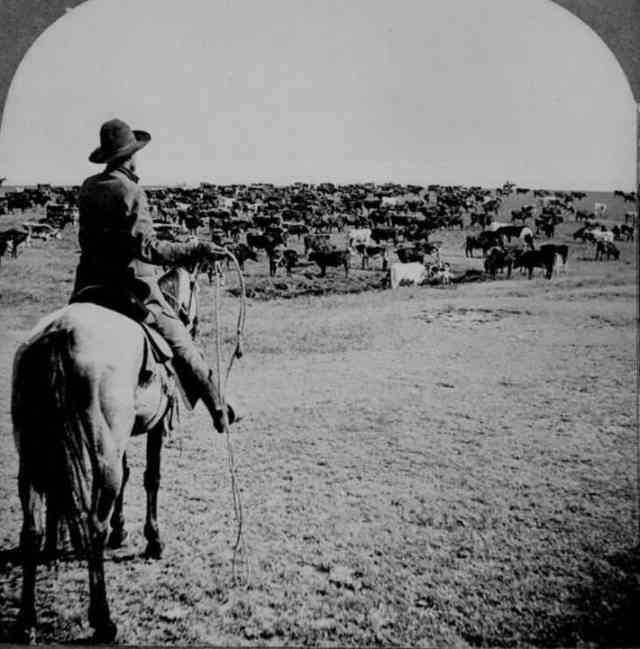
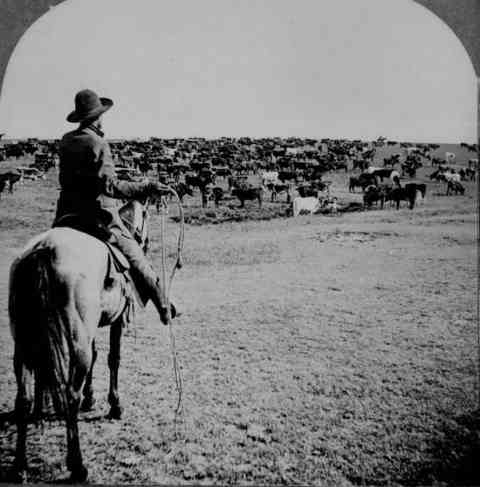
Cowboys had to spend weeks, even months traveling and working. Their hours were long and there were hardly any breaks in between. Not only was their little time for rest, but there was little time for bathing as well, making the life of the cowboy a truly filthy one.
Sandstorms were common in Texas. Here, an enormous cloud looms over the town. The image was captured in Midland, Texas, 1894. This certainly wasn’t the first time something like this happened in the West.
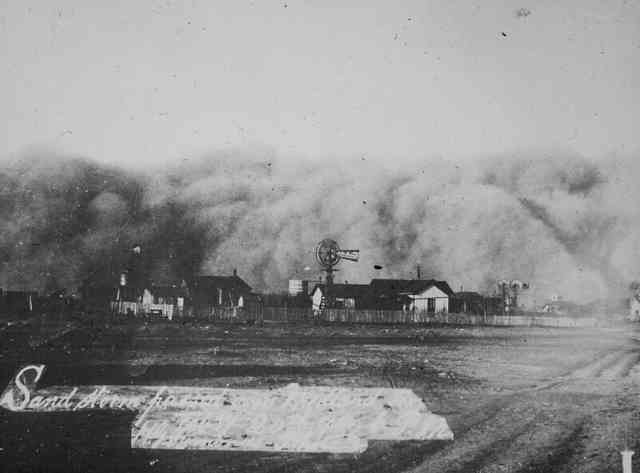
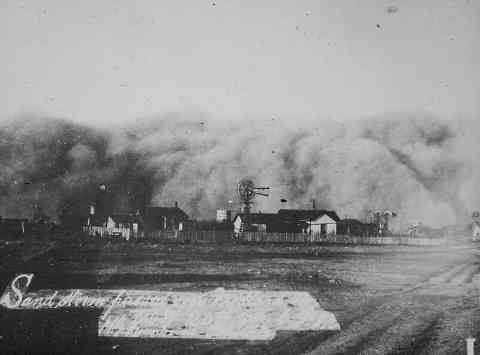
Sandstorms, tornados, and even hurricanes plagued the land, making the conditions for travelers extremely dangerous. Though it was a great burden on the farmers, the harsh climate was just another part of the Wild West, which held a mythic space in the minds of the people in the past and even today. Sandstorms such as the one pictured above was just a common toil in the life of the pioneers.
Captured in Nueces River, Texas, 1886, this image shows the Apaches waiting to be sent into exile on the train behind them after their surrender to General Miles. Before Americans came to settle on their land, the Apache people were a proud tribe in the Southwestern United States. Their ancestors settled in the high mountains, deep canyons, and the southern area of the Great Plains.
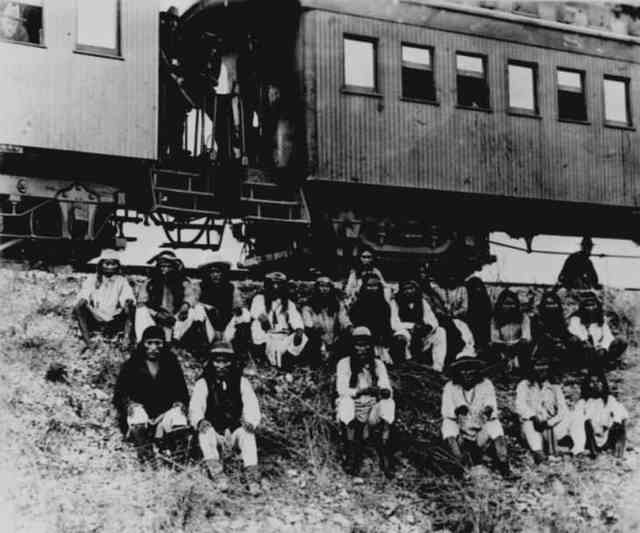
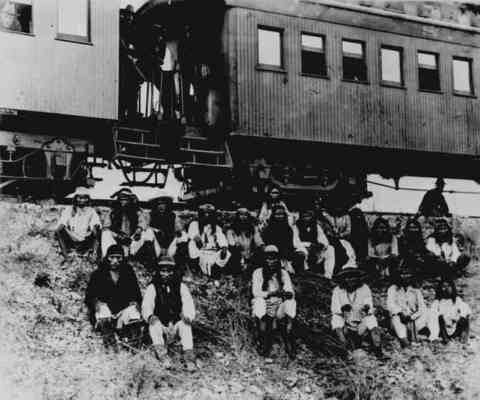
Since being removed from their land, the Apache people had to adapt, causing them to move throughout the United States and being able to speak multiple languages. Still, even though they managed to live in the new world, they kept fighting for their rights, leaving many U.S. Army soldiers to consider them as fierce and skillful warriors.
This picture was taken in San Bernadino, California in 1871, and shows Correspondent Fred W. Loring posing in front of his mule. He developed a passion for writing at a young age and eventually became an author. In 1871, he published a novel, Two College Friends, and a book of poems. He also made some journalistic and creative contributions as well.
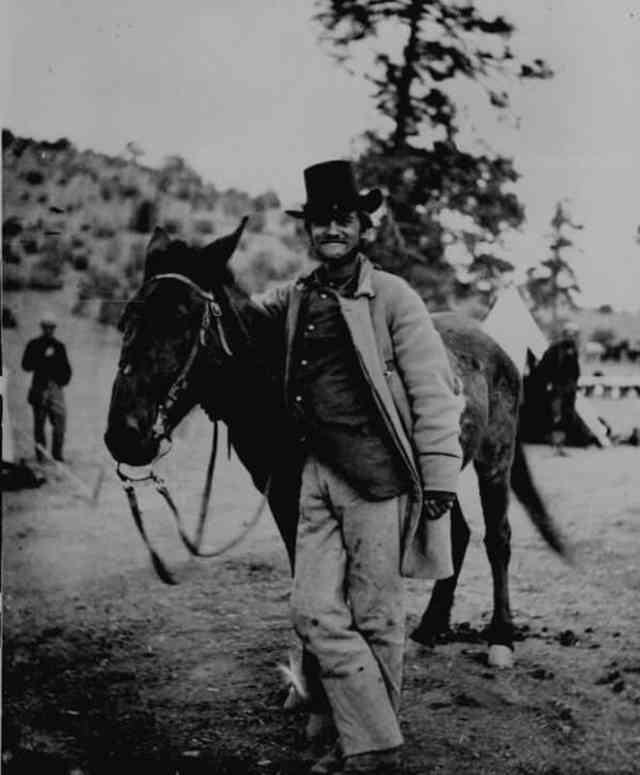
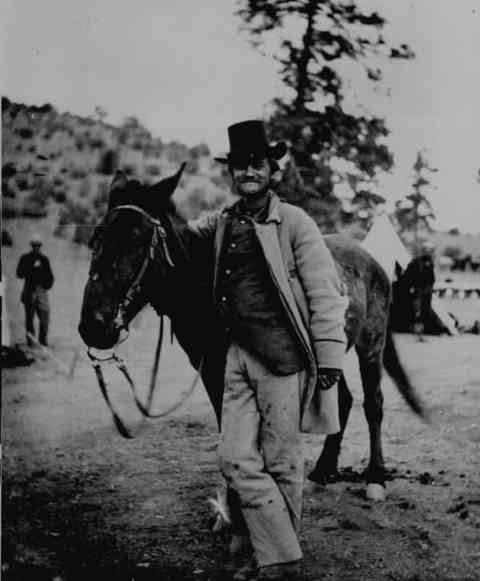
In the spring of 1871, Loring traveled to an expedition that was held in Arizona. On his way there, Indians ambushed his party’s carriage killing him, the driver, and four others that were with him. This incident later became known as the Wickenburg Massacre. Loring was mourned by many, especially since most considered him as a most promising American author.
Gambling was one of the most popular pastimes in the Old Wild West during the 19th century. So, it's unsurprising that many of the first buildings were gambling halls. As towns were continuing to be established all over the country, so did gambling halls.
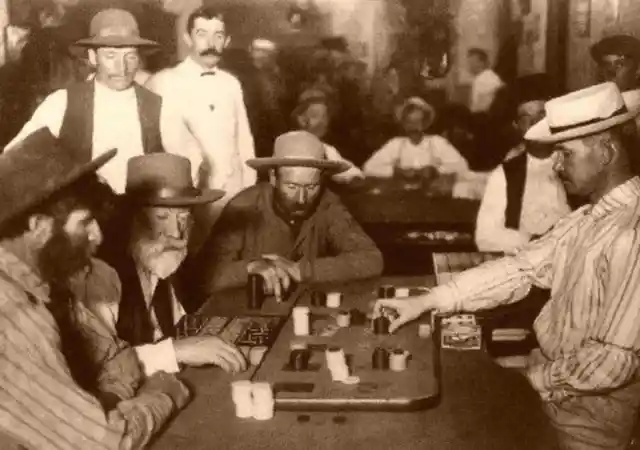
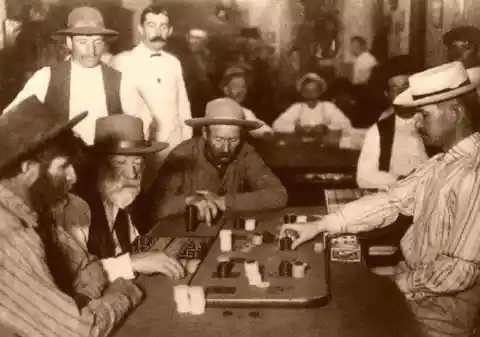
One of the reasons as to why gambling halls became extremely popular was because most who traveled to the West were considered natural-born gamblers. Clearly, anyone who wanted to move out in the middle of nowhere, looking to make it big, had to have a knack for taking risks. One of the most popular games that game out of the 19th century was a bluffing game, which eventually evolved into American poker.
The Sioux Nation is made up of 3 different tribes under the same banner: Eastern Dakota, Western Dakota, and the Lakota tribes. It is one of the largest and most well-known tribes to have lived on the Great Plains. This image captures their teepees dotted against the landscape.
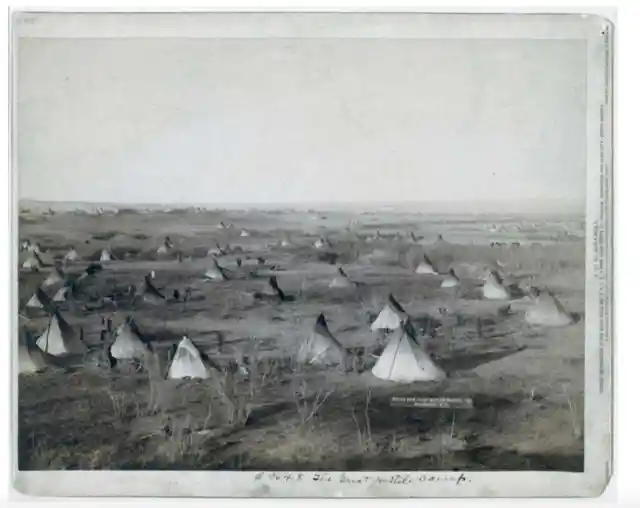
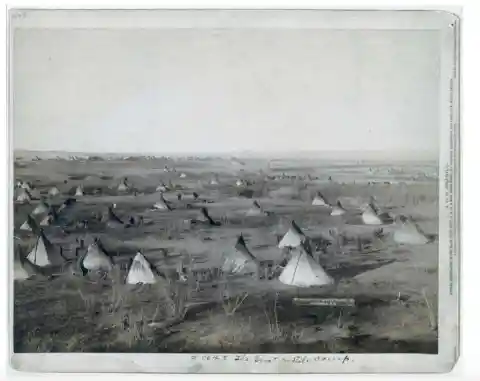
Tepees kept the tribes cool in the summer heat and warm in the winter. They also were easy to assemble as well as dissemble, making it ideal for the people when they had to relocate. This made it especially important to the Sioux tribe, since they were known to live a nomadic lifestyle.
Taken in Encinal, Texas, 1905, this photo depicts men hauling water across the countryside. The ones truly at work in this photograph are the mules which are pulling all the weight of the water across the plain. The truth is, mules were a huge source of transportation in wild west. If you needed to travel, then you had to have a mule unless you were planning on walking the entire way.
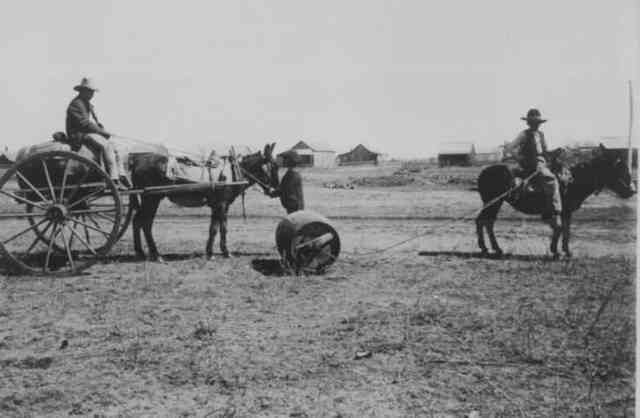
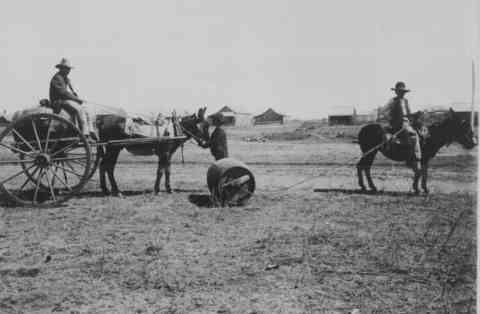
Because of their durability and fearlessness, many people back in the day owned a mule. Everyone from the Indians, to cowboys, to even “Buffalo Bill” Cody had a mule for a companion. America was practically built on the backs of these hardworking animals.
This photograph was taken in Encinal, Texas, 1905, and was the first house built in Dodge City in 1872. Dodge City would quickly become known as a frontier Cowtown, and become rich in history and legend. Many notable people passed through the humble city, such as Clay Allison, Wyatt Earp, Doc Holliday, and many more.
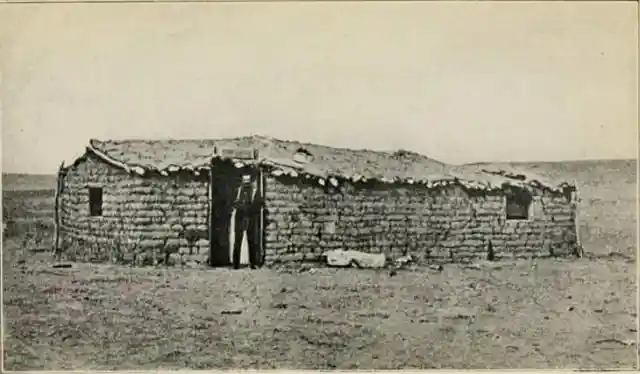
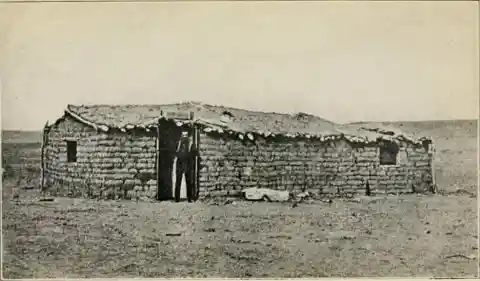
In 1865, For Dodge was established near Dodge City, harboring some rough times for the city as it kept getting attack by the Indians. The Fort would come to offer protection for the wagons and would later serve as a supply base for troops during the Indian Wars.
In Anadarko, Oklahoma, 1901, the town starts to grow as the crowd bids on land that is being auctioned off. Back in the day, land was everything. One of the most vital things to own in the Old West was property, and people were hungry for it.
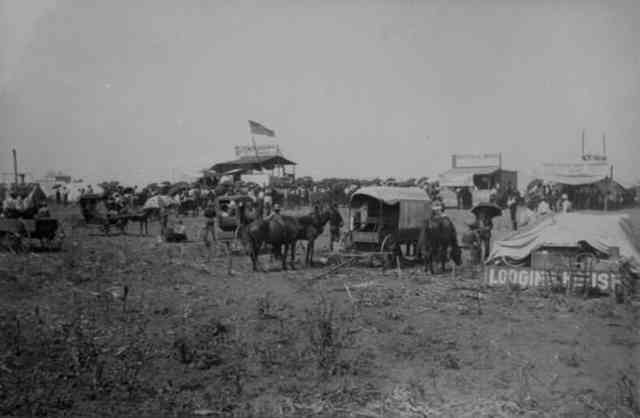
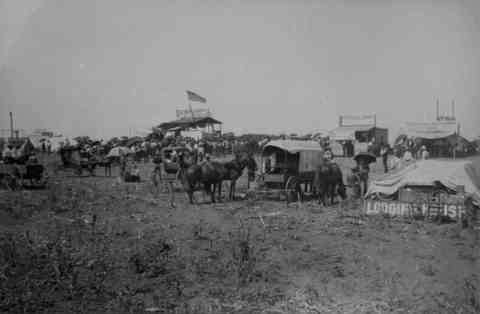
This is why the West expanded so rapidly; with migrants coming in, there was starting to be less and less space everyone, creating a need to search for new land. The West provided the perfect opportunity for a new start and many jumped at the chance, resulting in towns growing all along the country.
This photo is from 1876 and is of Deadwood Dakota, an old gold rush town. Though gold was found in different parts of the United States, no other state can beat California when it came to the valuable ore. The California Gold Rush all began when gold was found by James W.
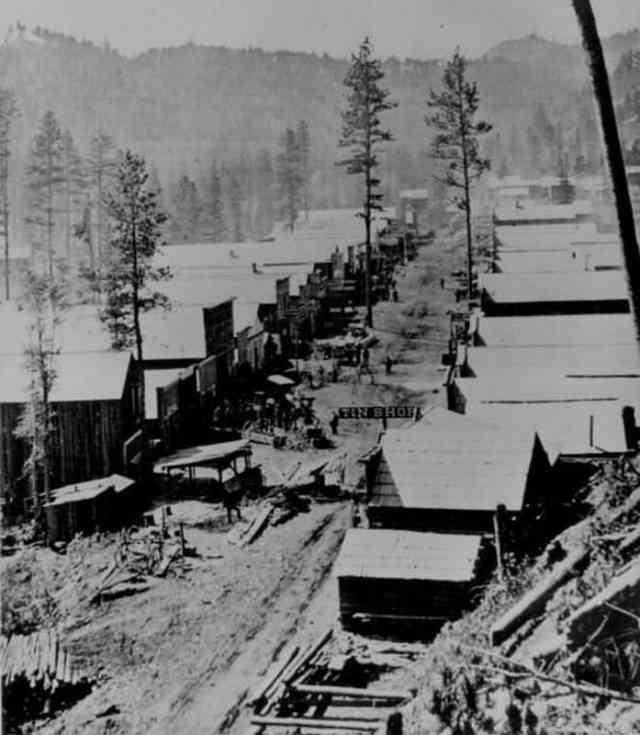
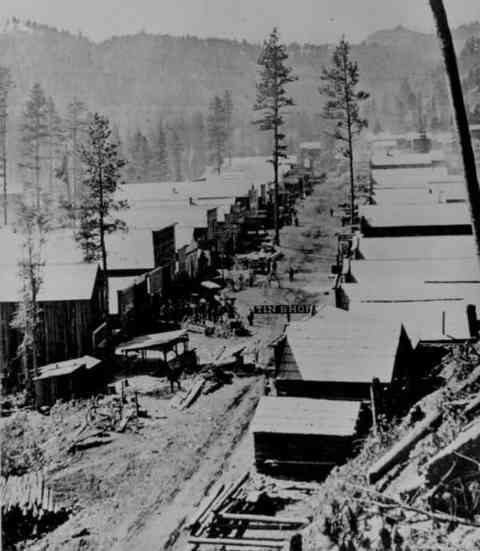
Marshall on January 24, 1848 at Sutter’s Mill in Coloma, California. Since then, approximately 300,00 moved to California, all with the dream of striking gold and becoming instantly rich. With the sudden boost in economy, it was long after when California received its statehood, which was given in the Compromise of 1850.
Saloons were a kind of bar that was particular to the Old West and was extremely popular. Pictured here is a saloon on the streets of an Old West town in Hazen, Nevada, 1905. The first saloon was established in Wyoming in 1822 as a way to serve fur trappers. Aside from trappers, saloons served a variety of customers such as lumberjacks and lawmen.
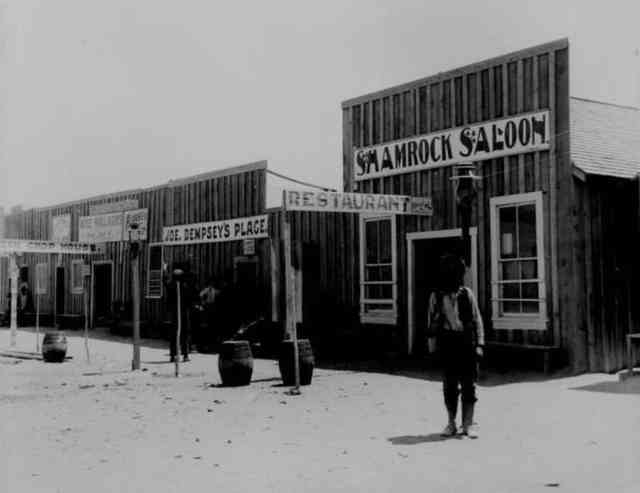
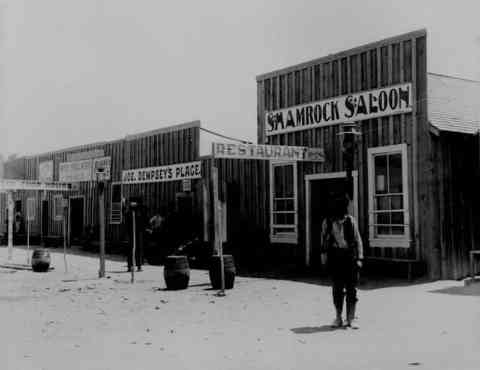
Everyone was welcomed. Soon after its first establishment, saloons rapidly appeared all across the country. However, some became more than just a bar. A large number of them turned into gambling houses, brothels, and opium dens.
Captured in Seattle, Washington, 1909, women gather outside the Klondyke Dance Hall and Saloon. During the first years of the California Gold Rush, dance halls were a small affair and often held in the tents. Eventually it grew into something more, and by the 80s were a more elegant, luxury event.
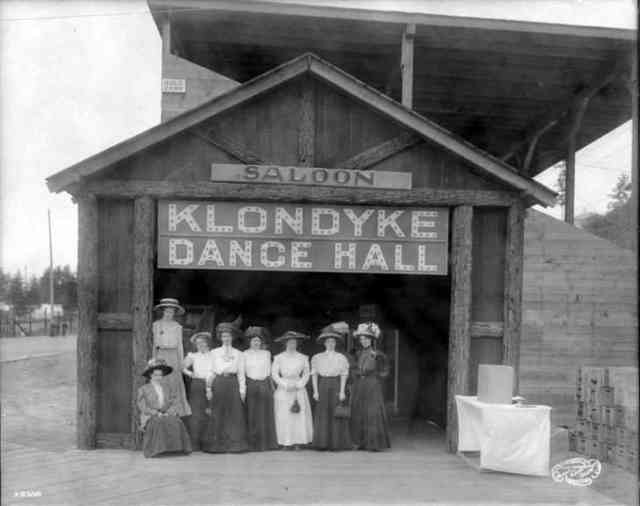
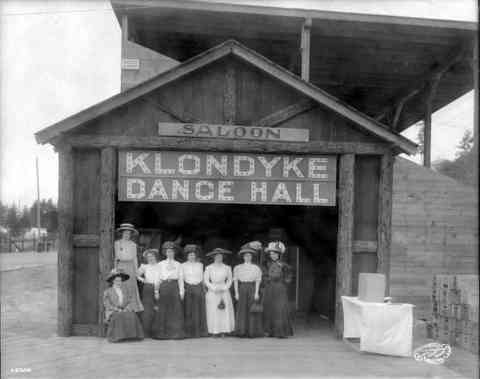
In the beginning of the dance halls history, dance girls were thought to be good girls and were expected to be respected by the audience. However, they couldn’t prevent the occasional gun fight and violence that would take place from time to time within the halls. As time went on, the rules continued to lessen and became what they are known as today.